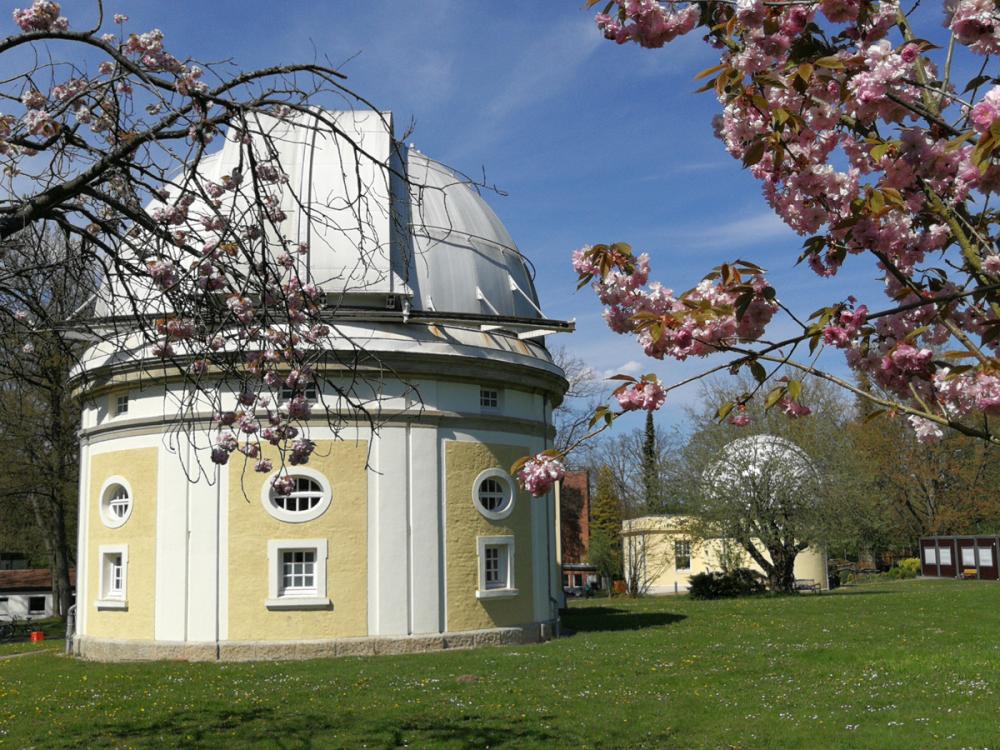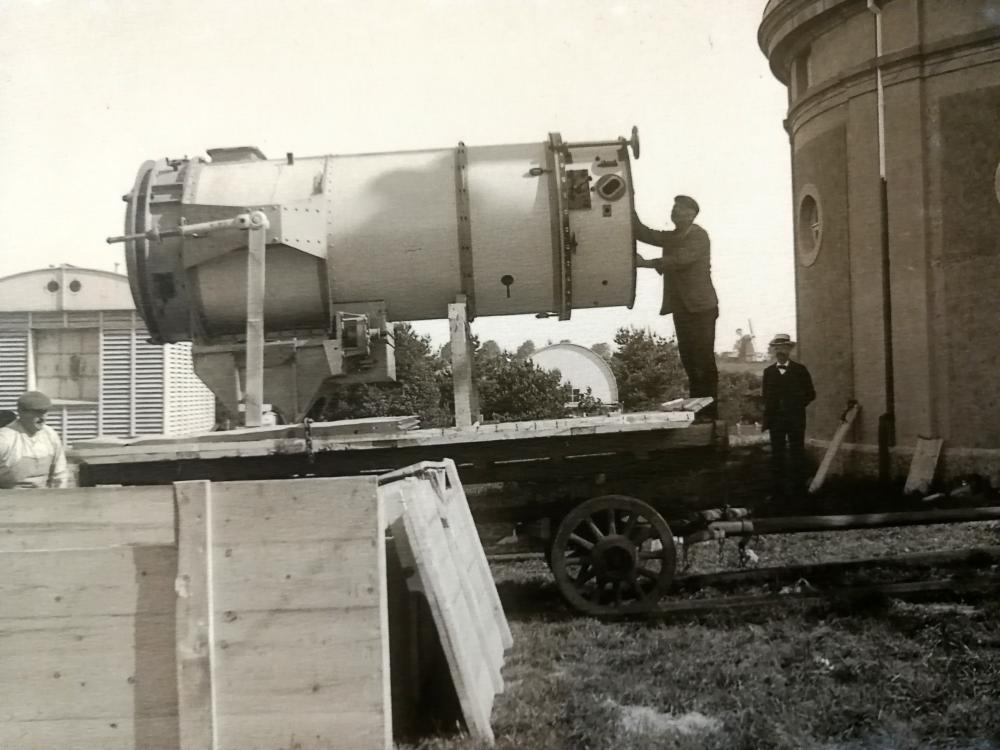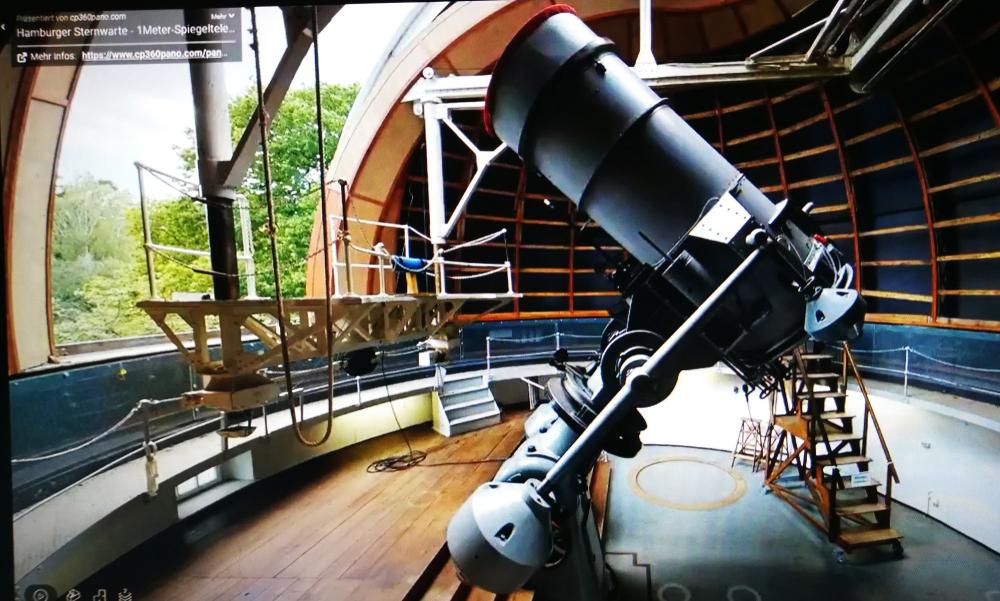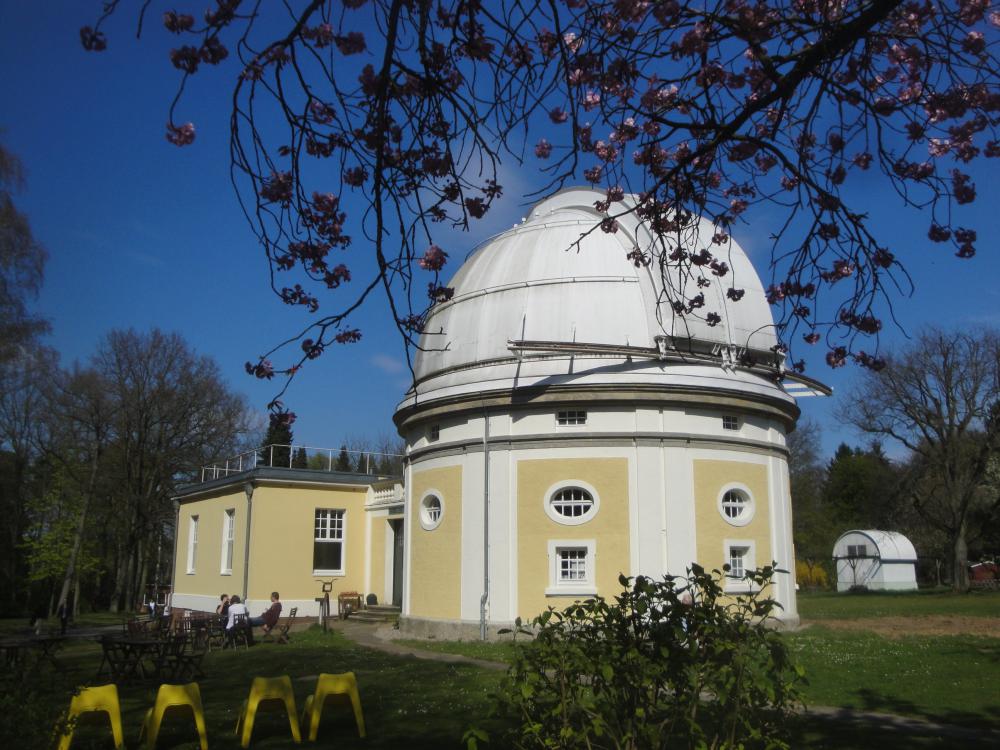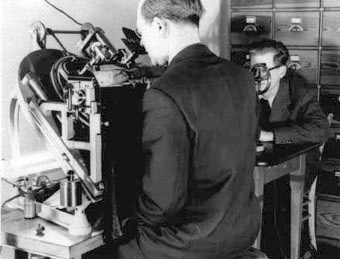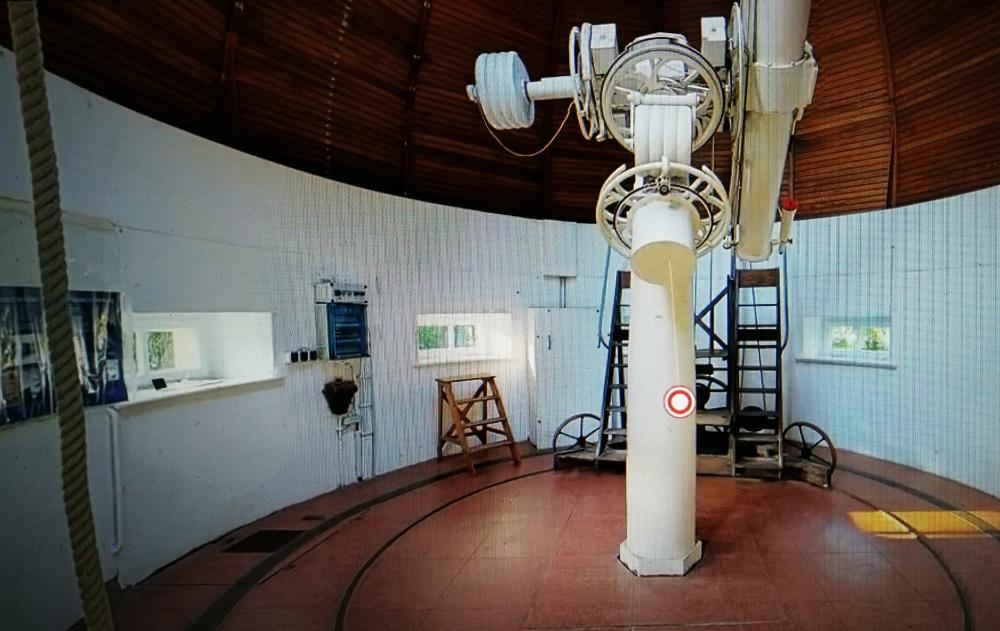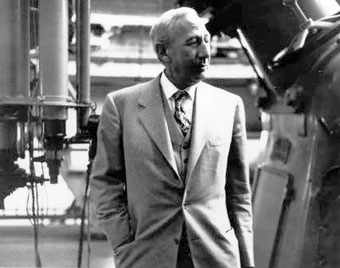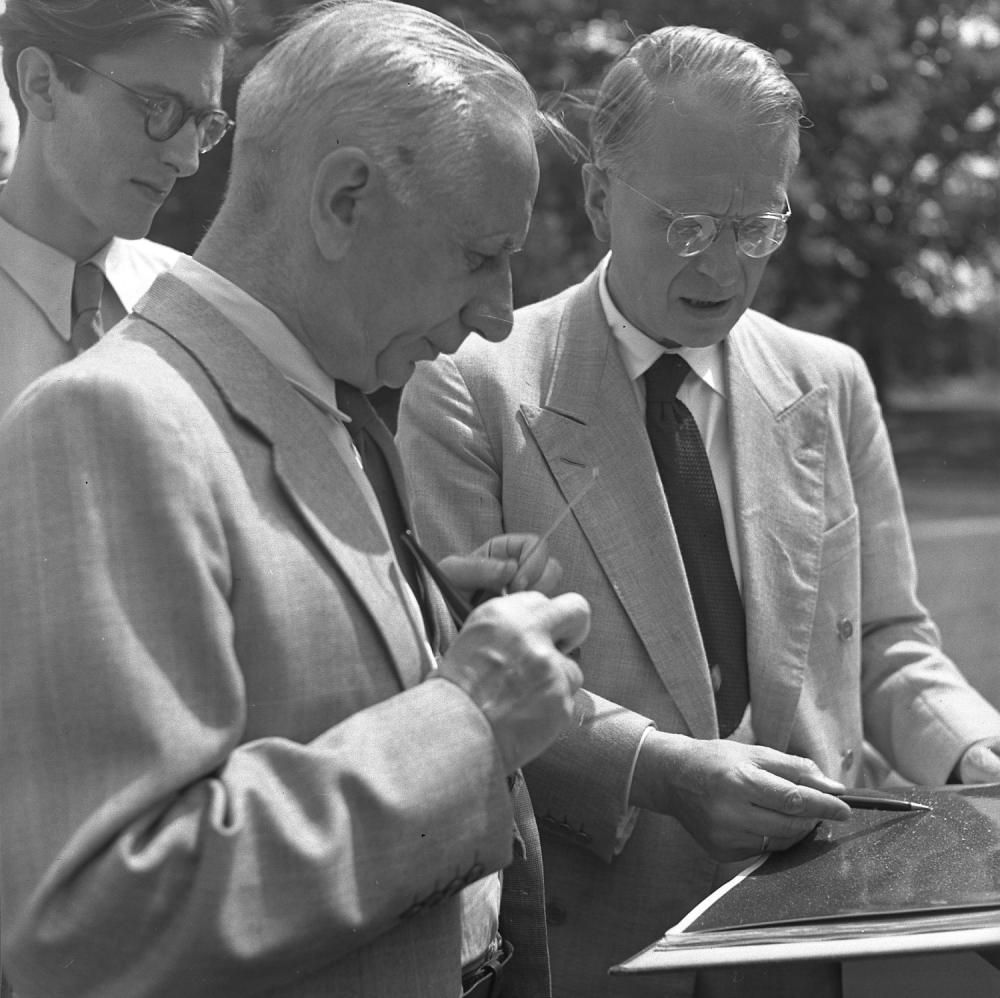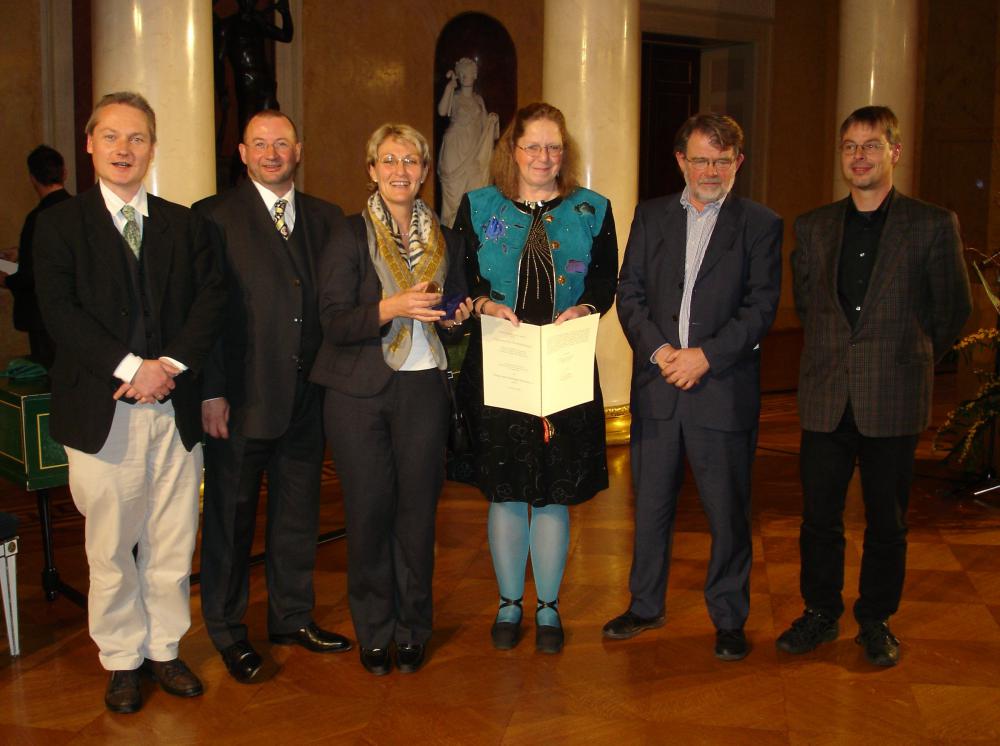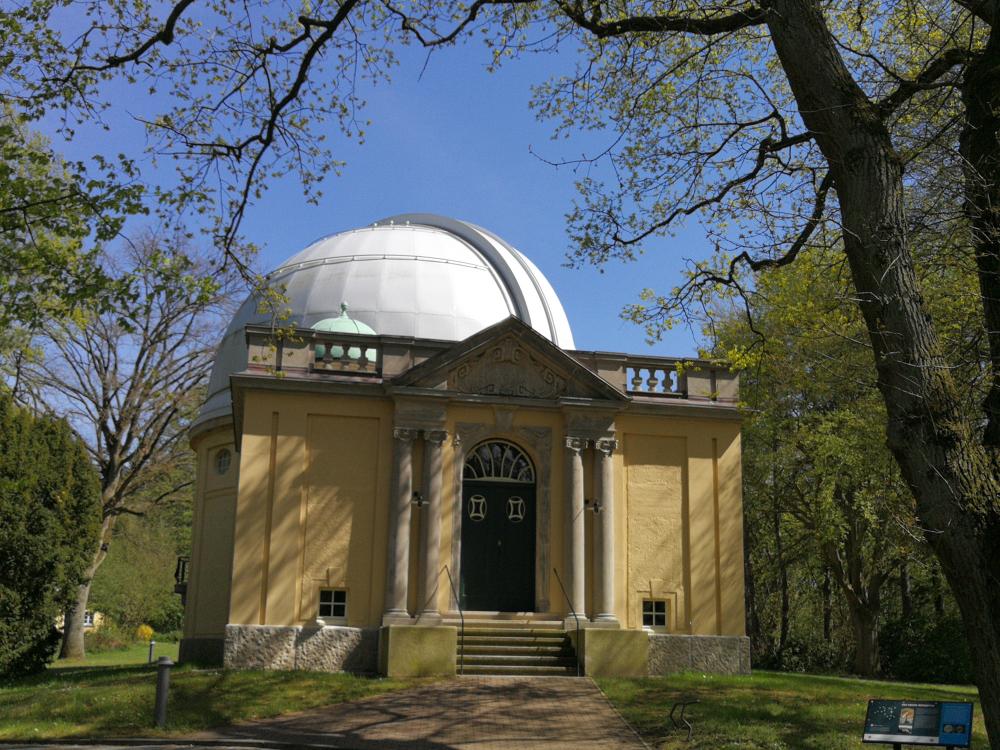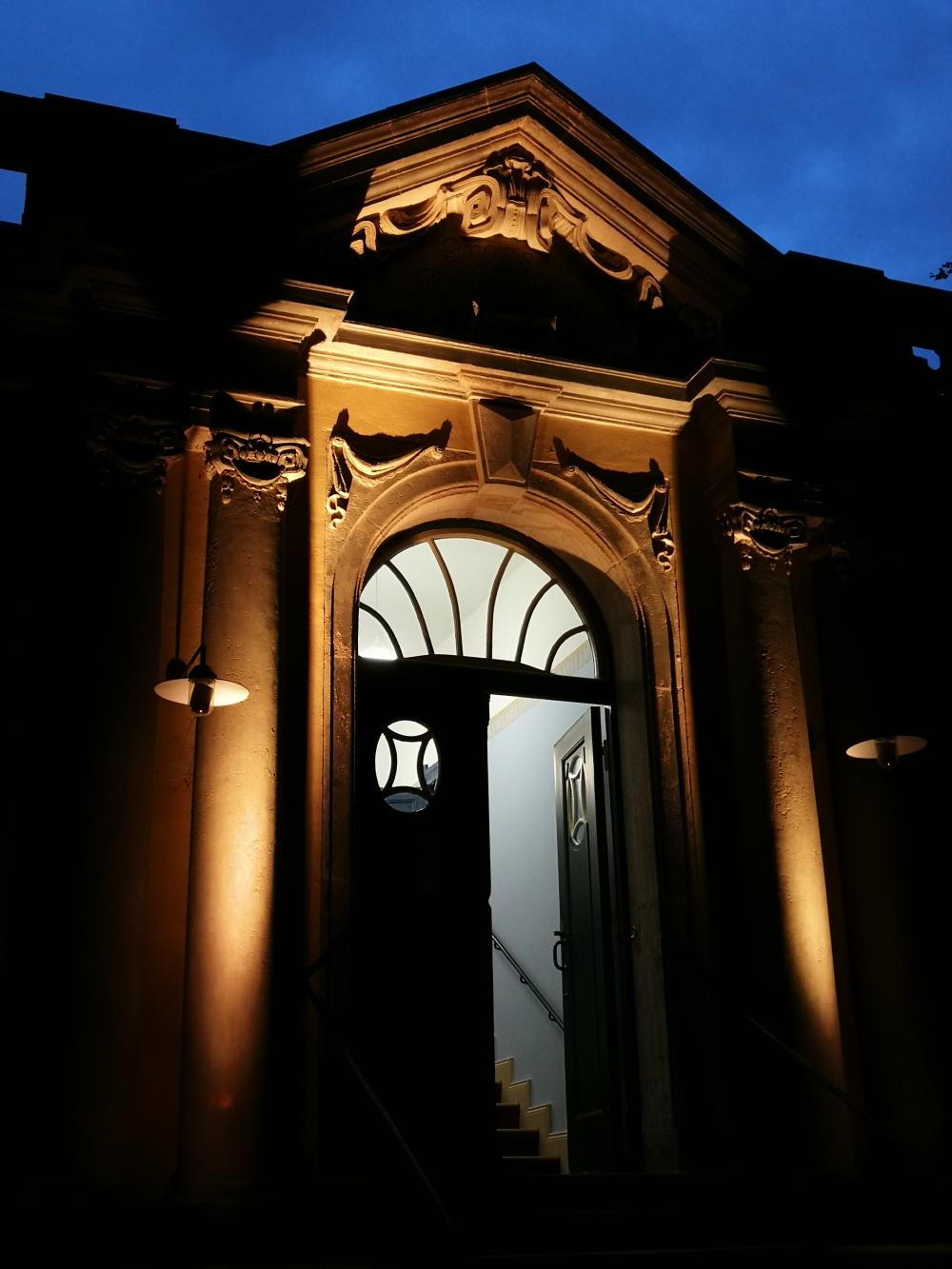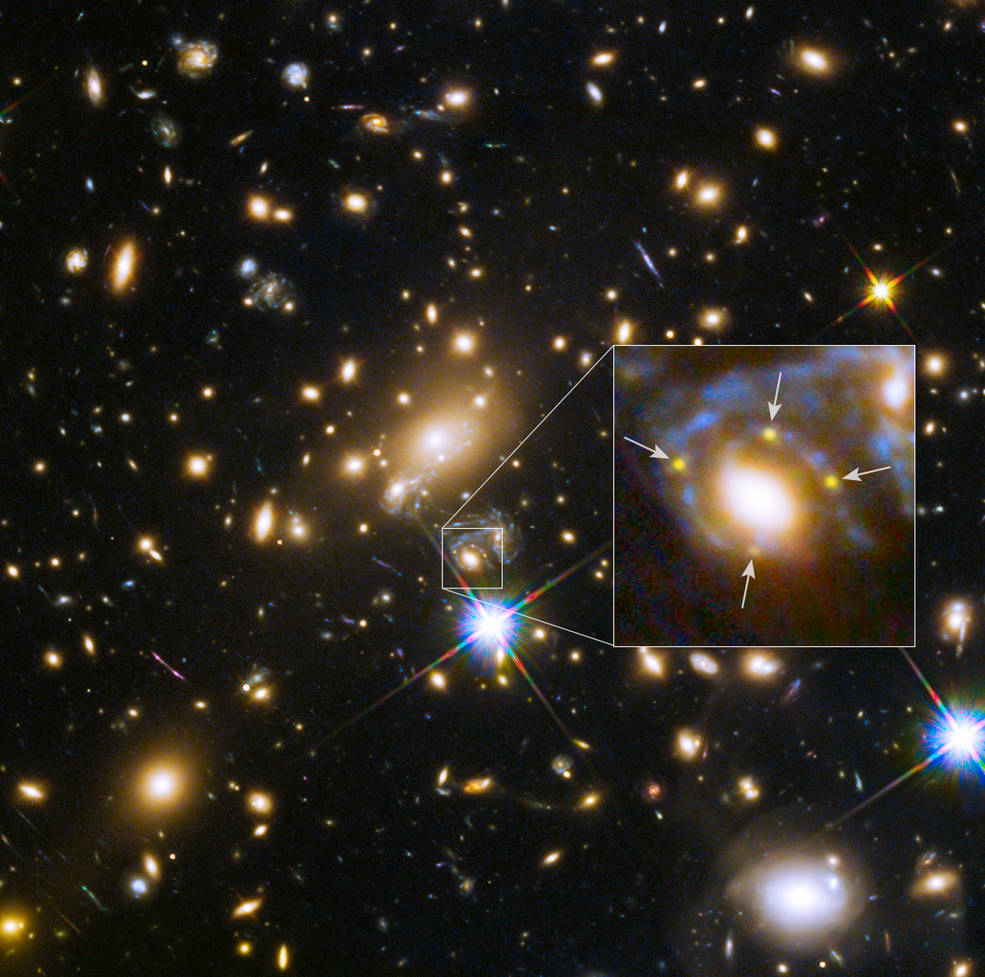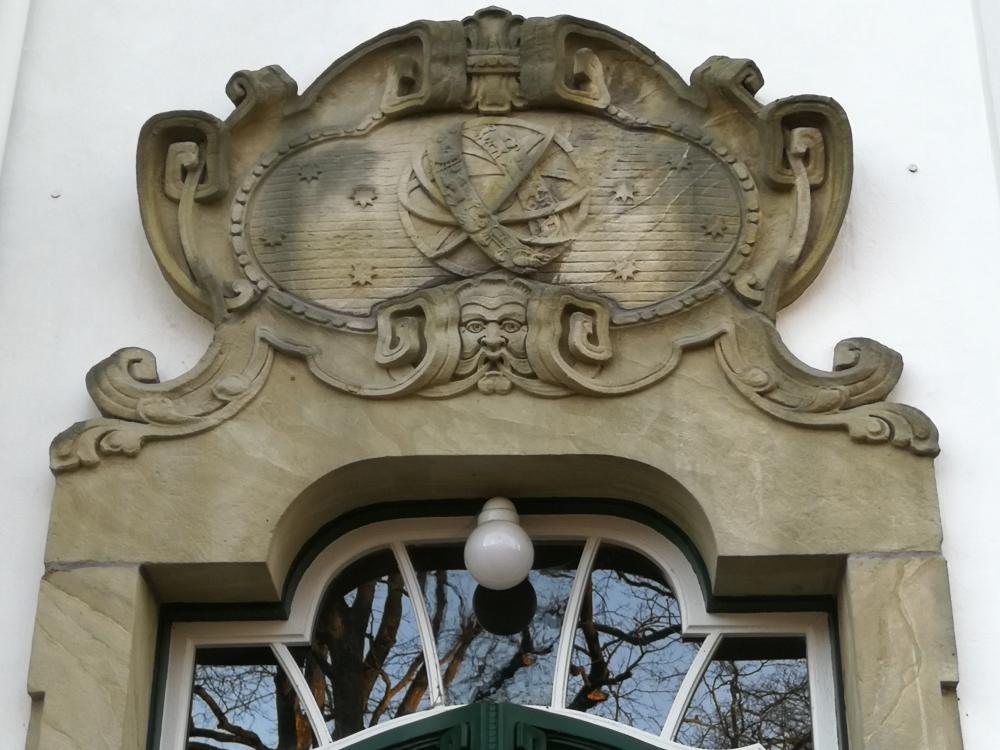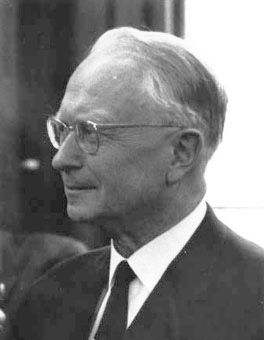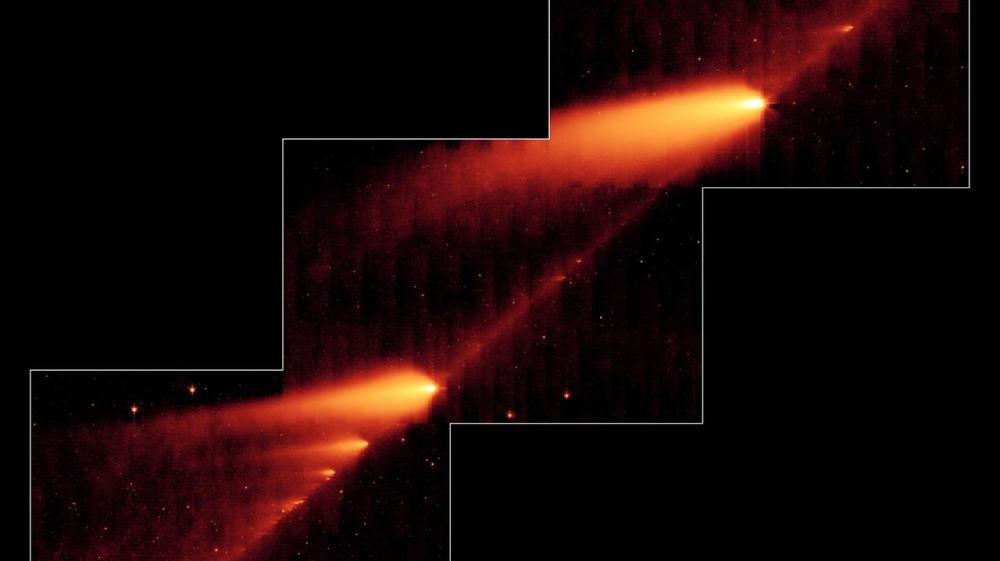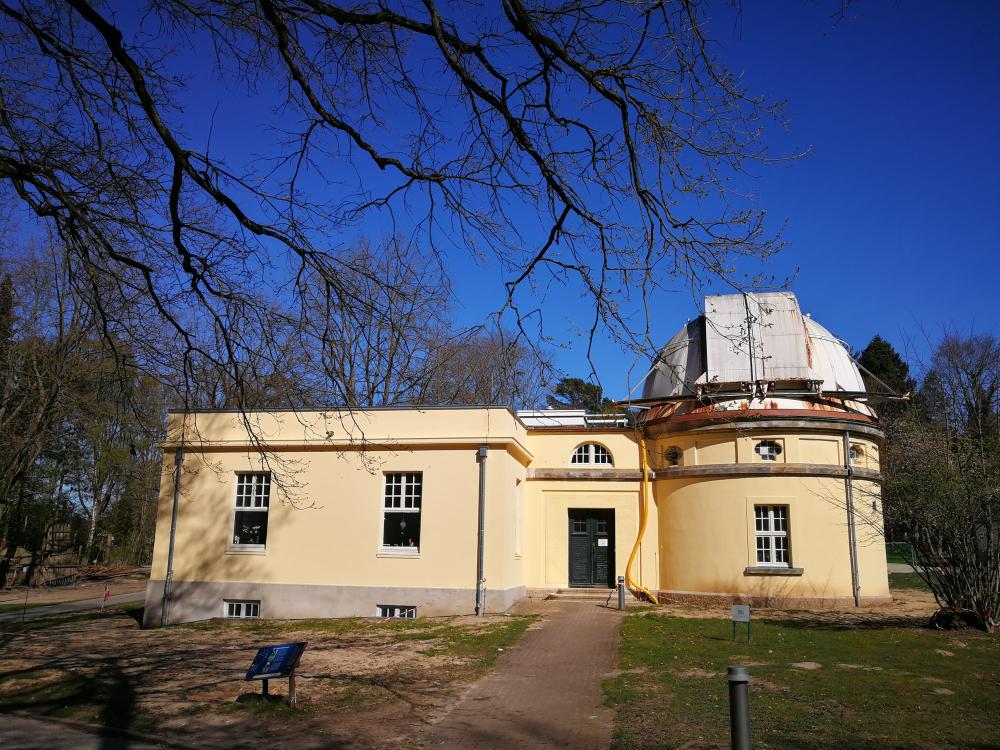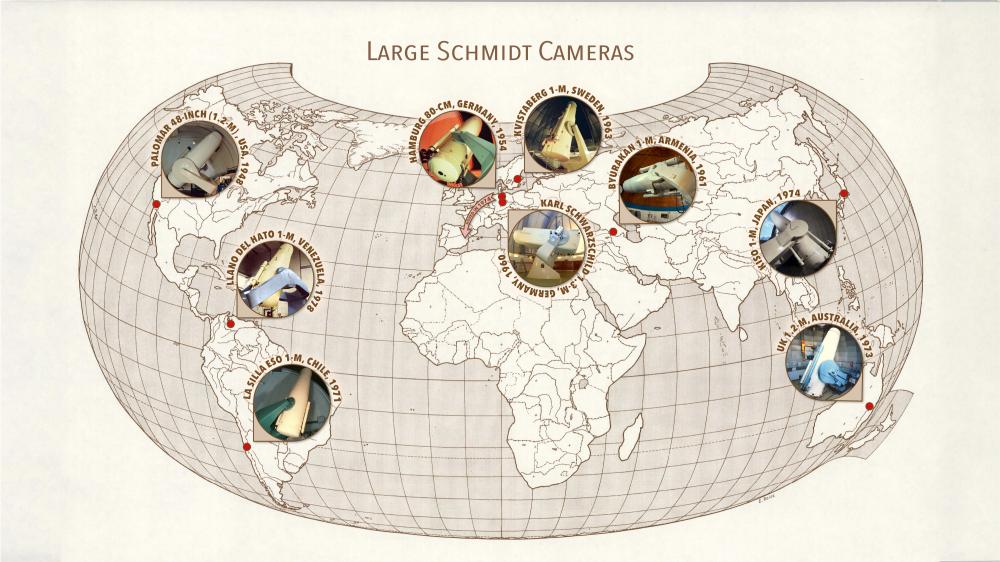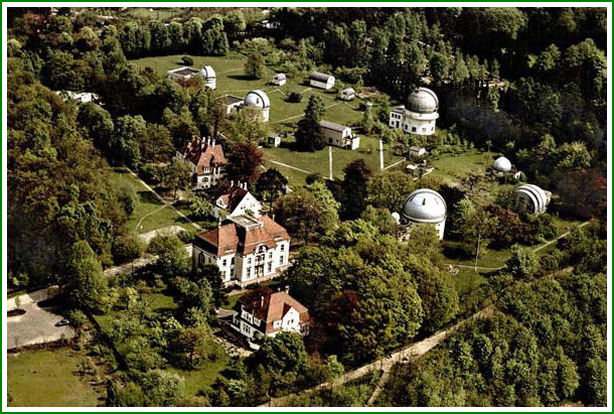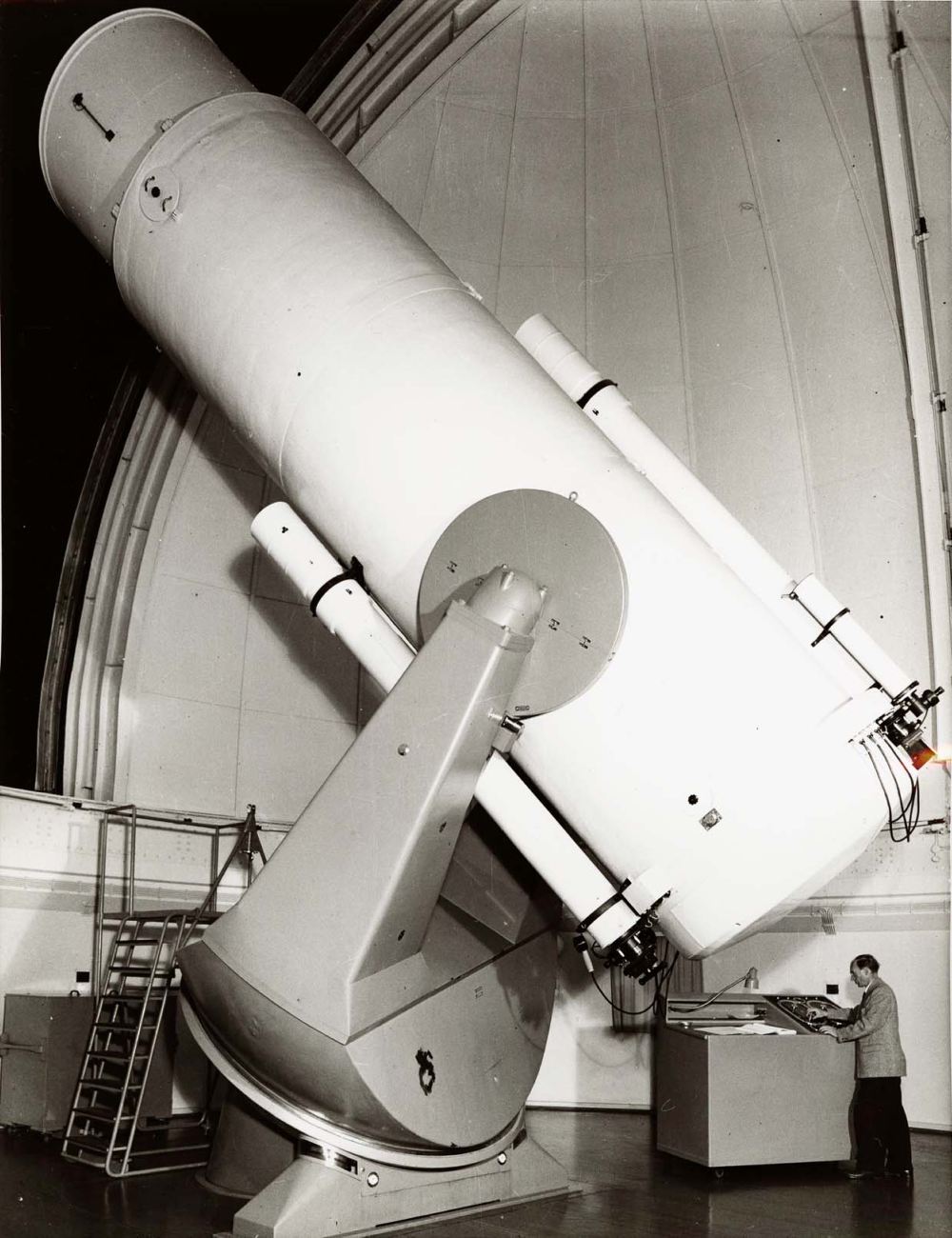
Category of Astronomical Heritage: tangible immovable
Sternwarte Hamburg-Bergedorf, Germany

Description
Geographical position
Hamburger Sternwarte in Bergedorf
Gojenbergsweg 112, D-21029 Hamburg-Bergedorf
Entrance for Visitors: August-Bebel-Str. 196, 21029 Hamburg
Location
Lat. 53° 28′ 49.6″ N, long, 10°14′ 27.8″ E, elevation 35m above mean sea level.
IAU observatory code
029
Description of (scientific/cultural/natural) heritage
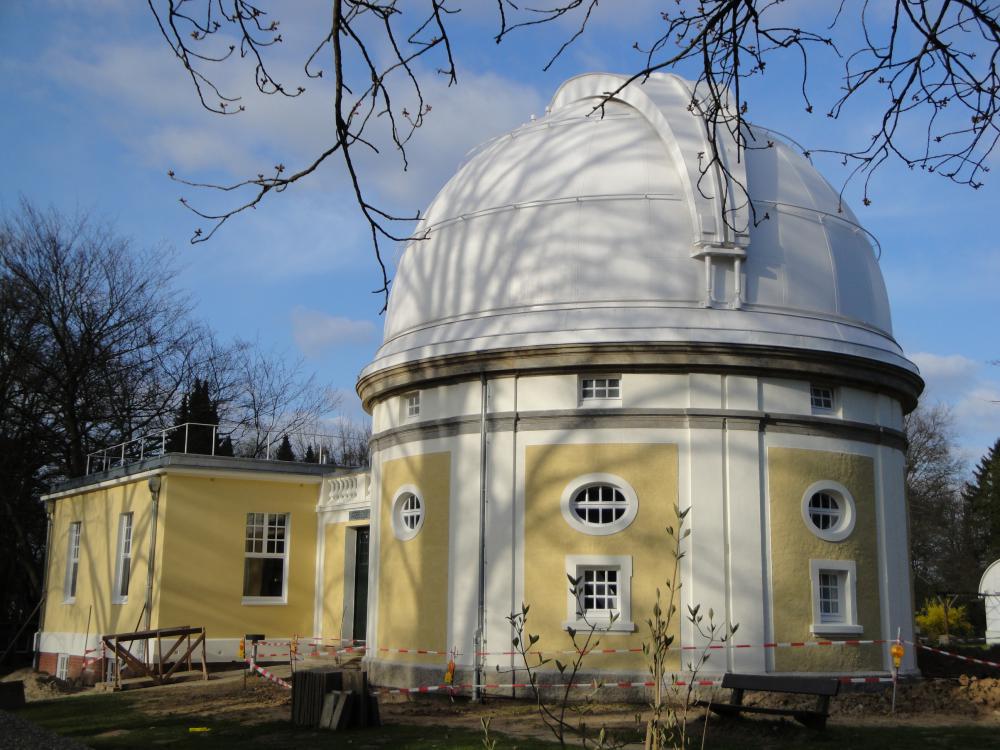
Fig. 1. 1-m-Reflector of Hamburg Observatory, Carl Zeiss Jena, 1911 (Photo: Gudrun Wolfschmidt)
Hamburg Observatory was at the beginning of the 20th century among the most modern and largest observatories in Europe, was not only important for Hamburg or Germany.
The neobaroque architecture, built by Albert Erbe (1868--1922) in 1906--1912, is not only impressive in the respect to technology but also to aesthetics.
There were two innovative ideas:
- First, the observatory was moved from the Millerntor in the city center -- because of increasing air pollution caused by the nearby factories and by the steamships, disturbing electric lighting of the city and vibrations by the trams.
- Second, the introduction of the Astronomy Park layout like in Observatoire de Nice, 1879--1886, and Heidelberg-Königstuhl, 1896--1900, instead of one central building with the three domes on the top.
Transition from classical astronomy to modern astrophysics around 1900

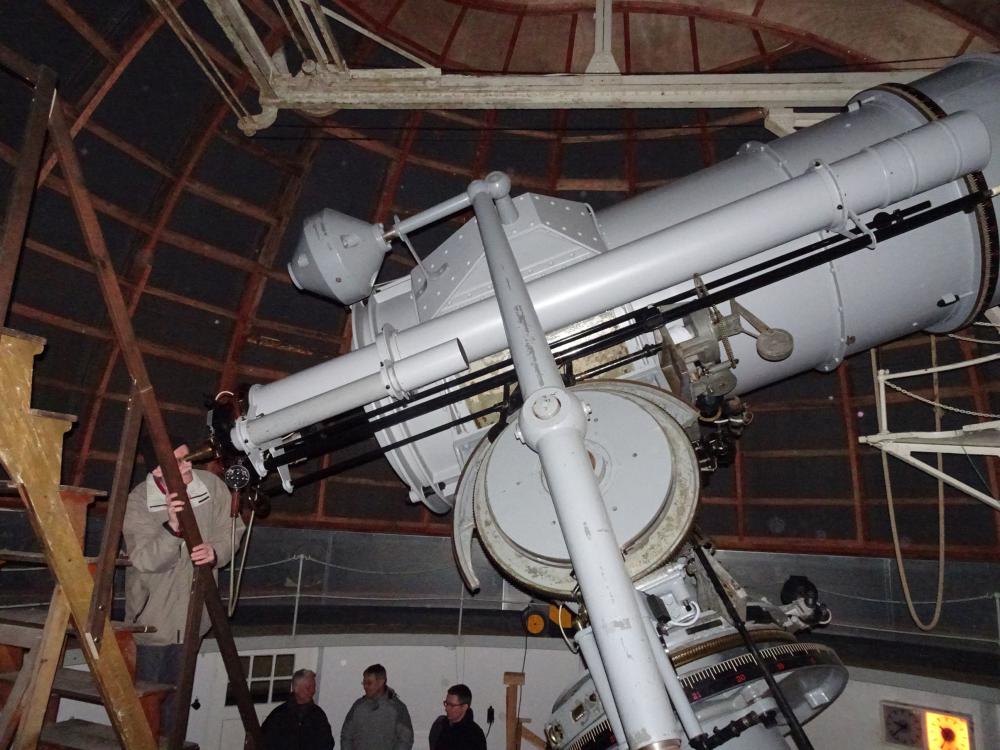
Fig. 2a,b. 1-m-Reflector of Hamburg Observatory, Carl Zeiss Jena, 1911 (Photo: Gudrun Wolfschmidt)
Observatories through the 19th century had an emphasis in positional astronomy, combined with time service for the city and for navigation.
At the turn from the 19th to the 20th century astrophysics as a new field of astronomy started to play the dominant role. This new kind of research caused new instrumental equipment (reflecting telescopes, spectrographs, instruments for astrophotography, photometers and solar physics equipment), but also a new architectural layout where the new functions are visible.
Hamburg Observatory with its modern astronomy park layout, prestigious architecture, instrumental equipment, relevance for research and state of conservation -- all this, based on our current state of knowledge, this combination is quite unique and is therefore of national and international importance.
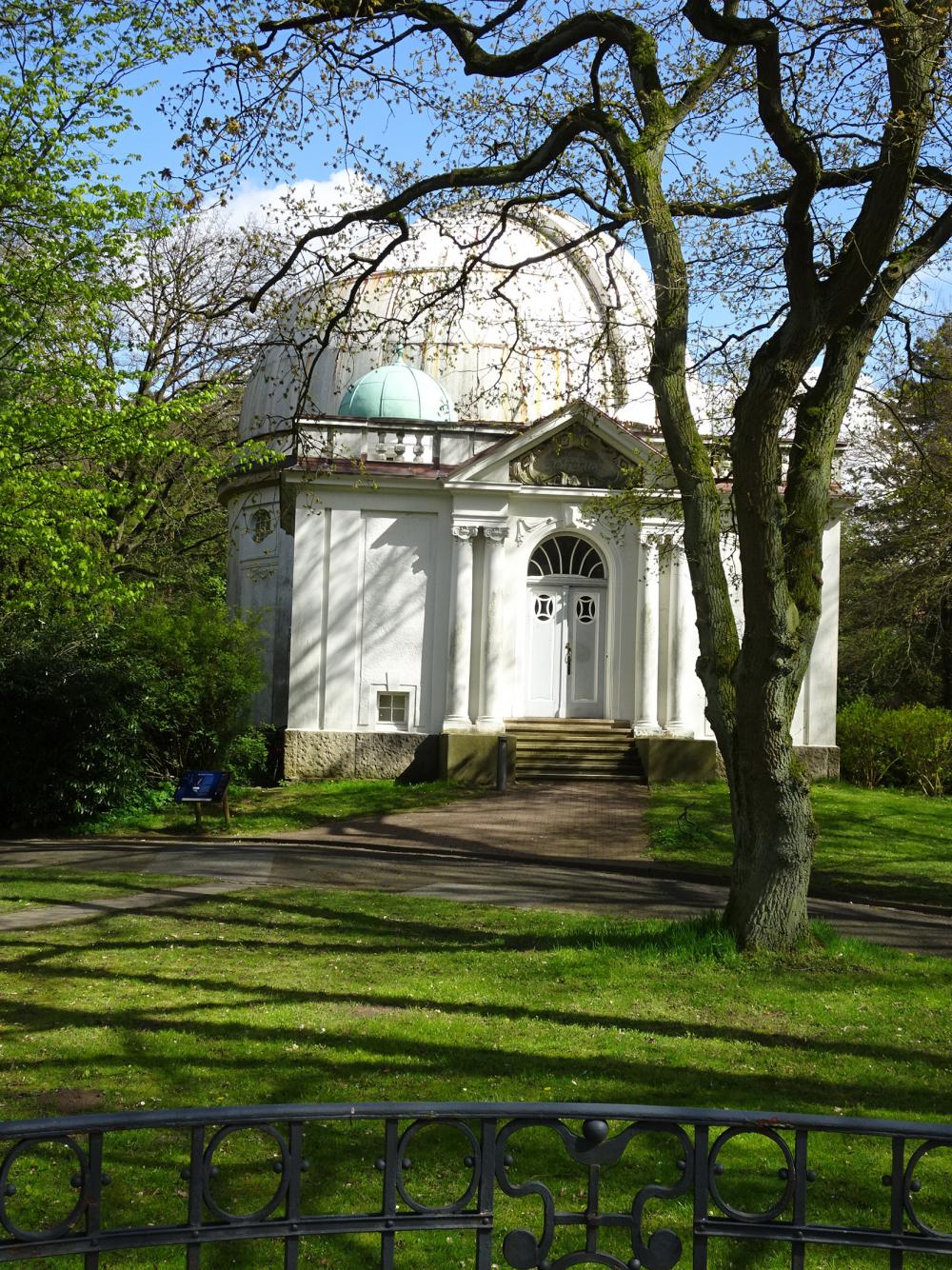
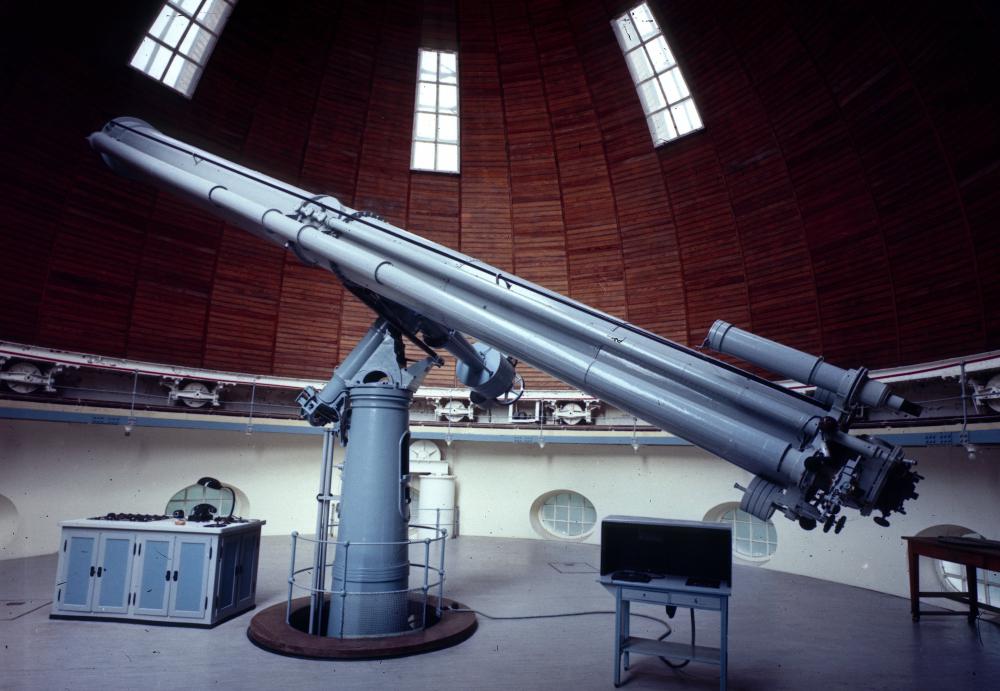
Fig. 3a,b. Large Refractor of Hamburg Observatory, Steinheil/Repsold, 1912 (Photo: Gudrun Wolfschmidt, Hamburg Observatory)
Hamburg Observatory together with a group of observatories around the world shows very well this important step in the development of observatory architecture, this transition around 1900, the change from classical astronomy to modern astrophysics concerning the choice of instruments, the modern architectural structure and the idea of the astronomy park; all this is an important cultural heritage connected with observatories of this time.
Hamburg Observatory, the urbanistic complex, the buildings and their architecture, the quality of instruments, the scientific archives (collections of photographic plates, chronicles, observation books, correspondence, star catalogues, etc) as well as the scientific/ intellectual achievements, inventions and discoveries made by the persons related to the individual observatory are all to be understood as categories of the cultural heritage (also in terms of scientific heritage).
This corresponds to the four main categories according to which the "Outstanding Uuniversal Value" of the observatories will have to be evaluated: historic, scientific, and aesthetic. The following criteria ii, iv and vi for the "Outstanding Uuniversal Value" are relevant.
A serial trans-national application for inscription in the World Heritage List was planned, La Plata Observatory, Argentina, together with Hamburg Observatory (2021).
An application of Hamburg Observatory as Cultural Heritage Hamburg Observatory in Bergedorf for the Unesco national tentative list of Germany on October 30, 2021. See here for more details of the progress: https://www.fhsev.de/Unesco.php, and the application document can be found here.
History
Founding date(s) 1906--1912
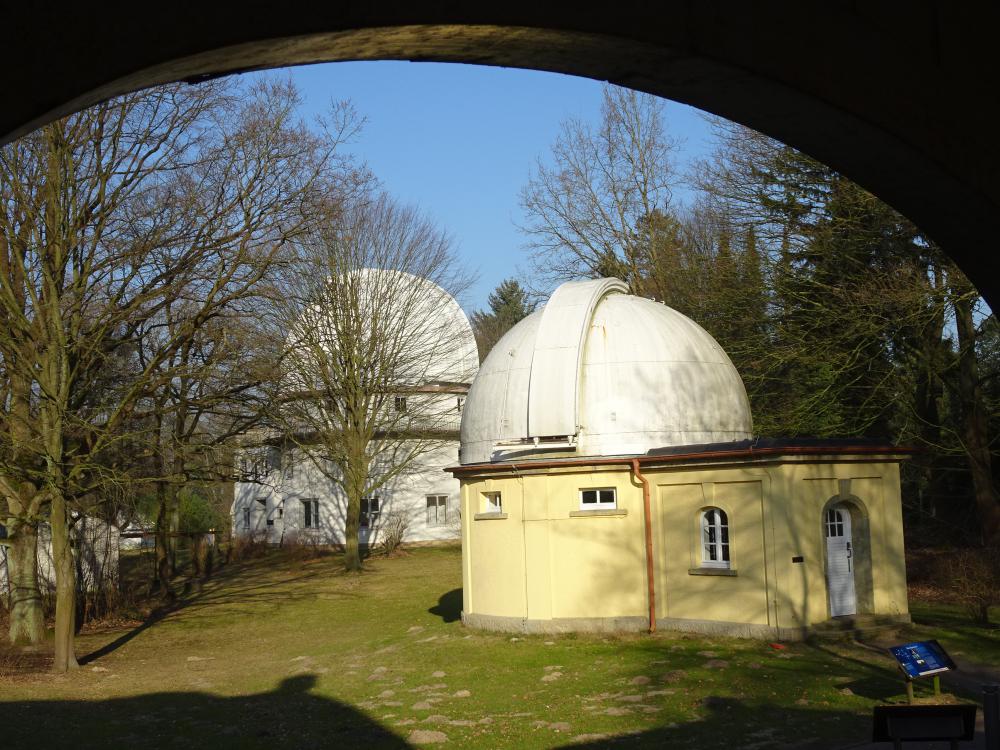
Fig. 4a. Equatorial Building of Hamburg Observatory (1912) (Photo: Gudrun Wolfschmidt)
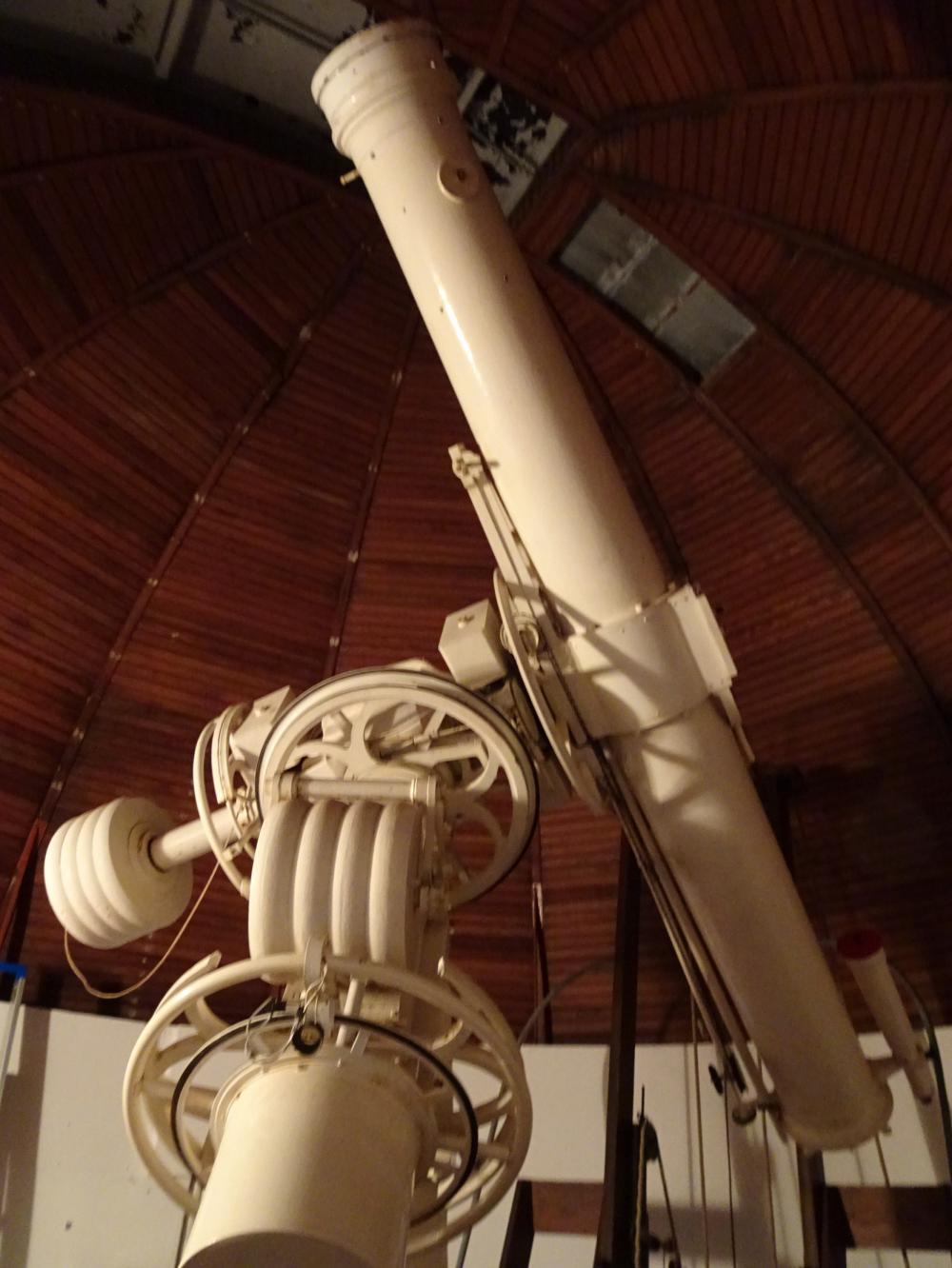
Fig. 4b. Equatorial of Hamburg Observatory, Merz/Repsold (1867/1912) (Photo: Gudrun Wolfschmidt)
Prehistory of Hamburg Observatory
Johann Georg Repsold (1770--1830) started Hamburg Observatory as a private observatory (with a meridian circle), located at the Stintfang (1802--1811) and at the Millerntor (1825-1906). In 1833 it became a Hamburg state institute with the directors Christian Karl Ludwig Rümker (1788--1862), from 1821 to 1830 in Paramatta Observatory (near Sydney), Australia, and George Rümker (1832--1900), 1853--1854 in Durham Observatory in England.
The topics were positional astronomy, timekeeping for navigation and for the city, navigational school.
An important task of the observatory was the timekeeping with transit instruments. The signal was transferred to the Timeball in the port of Hamburg. In 1912, it was done the first time with wireless (radio) signals -- one year before Paris Observatory, using the Eiffel Tower as an antenna (November 1913).
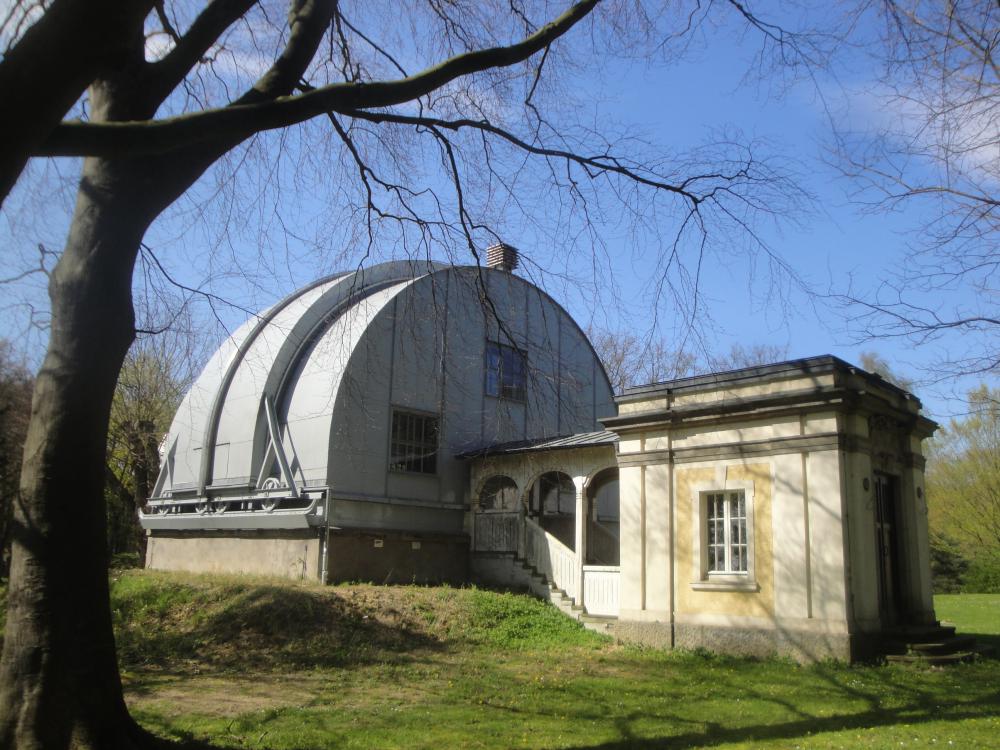
Fig. 5a. Meridian Circle Building of Hamburg Observatory (Photo: Gudrun Wolfschmidt)
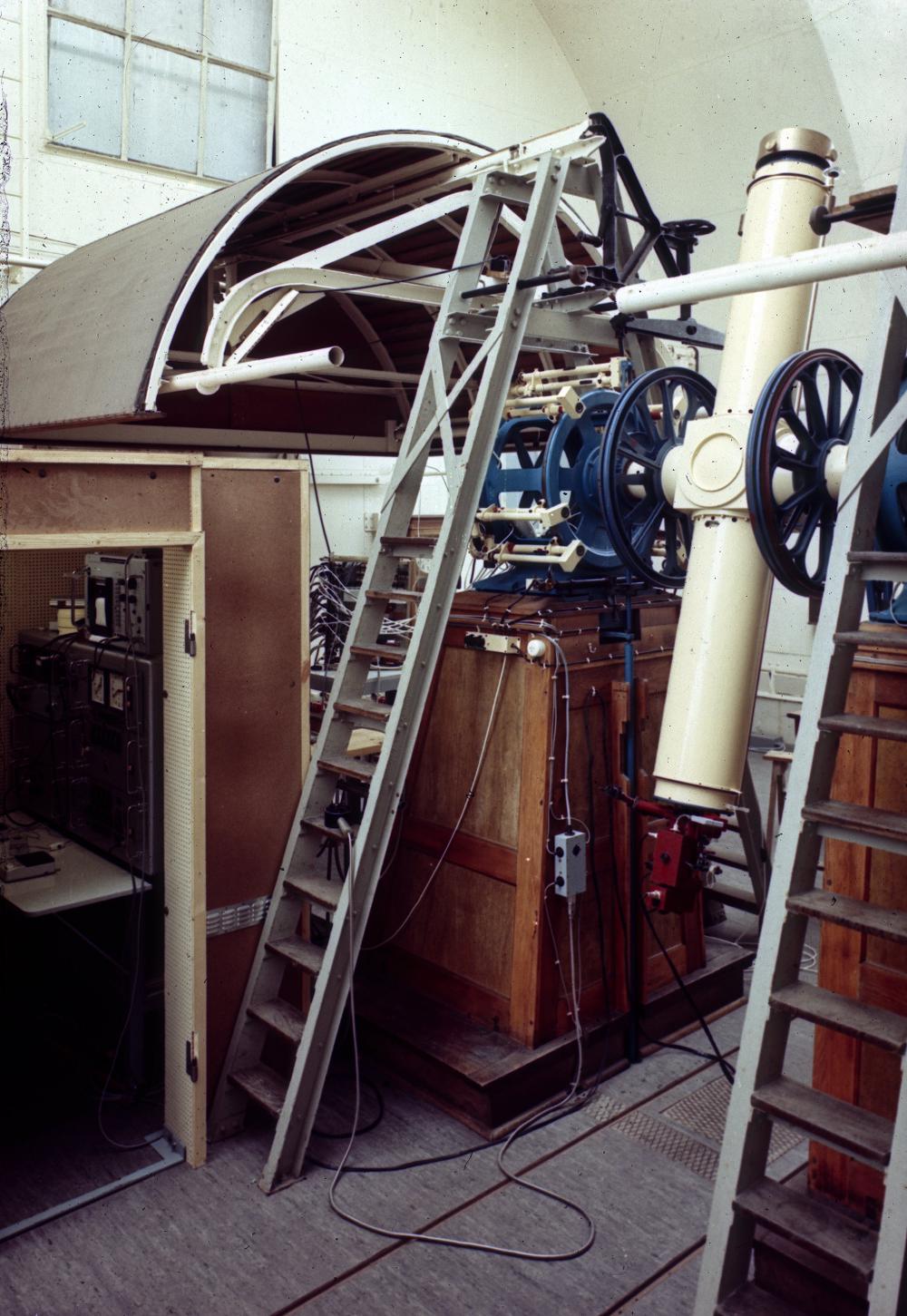
Fig. 5b. Meridian Circle, A. Repsold & Söhne, Hamburg, 1909 (Photo: Gudrun Wolfschmidt)
Directors of the Observatory
- Johann Georg Repsold (1770--1830), 1802 to 1830,
- Christian Karl Ludwig [Charles] Rümker (1788-1862), 1833 to 1857,
- George Rümker (1832--1900), 1857/67 to 1899,
- Richard Schorr (1867--1951), 1900 to 1941,
- Otto Heckmann (1901--1983), 1941 to 1968,
- Alfred Behr (1913--2008), 1968 to 1979,
- Co-Director with Behr: Alfred Weigert (1927--1992), 1969 to 1992.
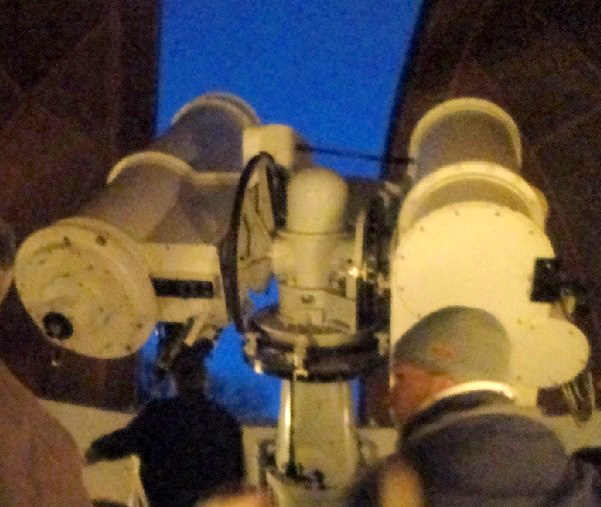
Fig. 6a. Lippert Astrograph (Photo: Gudrun Wolfschmidt)
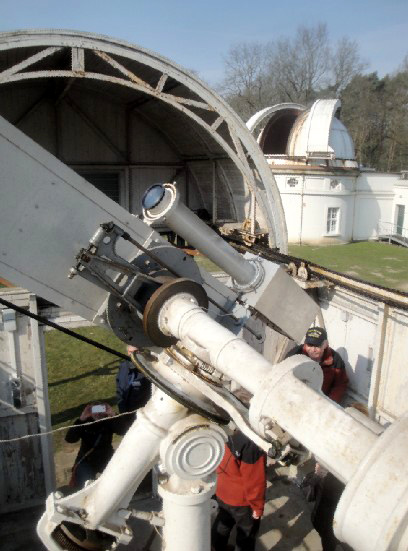
Fig. 6b. Salvador telescope (Photo: Gudrun Wolfschmidt)
The new observatory in Bergedorf and famous astronomers and highlights of their work
Richard Schorr (1867--1951) became director of Hamburg Observatory in 1900 and stayed until 1941. He raised the money and planned the new observatory, the architecture and the layout of the astronomy park, and the instrumentation. His main interest was astrometry and proper motion of stars, but he started also astrophysics, especially solar physics (8 big eclipse expeditions). He initiated many catalogue projects, most famous the AGK2 (observed 1913--1920, published 1951--1958). He and the Danish astronomer Holger Thiele (1878--1946) used the AGK2 for searching and position determination of comets and asteroids and they discovered 30 new asteroids and one new comet, D/1918 W1 (Schorr). The most important task was to support Bernhard Schmidt.
Bernhard Woldemar Schmidt (1879--1935), an optician born in Estonia, studied in Uppsala and at the Technical Highschool Mittweida near Chemnitz. In his workshop in Mittweida he became wellknown by building telescopes for amateur astronomers. He was allowed to improve the 50-cm Steinheil visual refractor at the Potsdam Astrophysical Observatory. Schorr realized the excellence of Schmidt’s constructions, especially mirrors, and offered him to set up his workshop in Hamburg Observatory in 1927. First Schorr asked Schmidt to build a horizontal mirror and coelostat telescope for solar physics. In 1930 Schmidt invented the Schmidt camera ("Schmidtspiegel"), a telescope with a spherically shaped mirror and a special correction plate (made with a clever "vacuum pan" method); the result was a very wide field of view (15 degrees in diameter) and images on the photographic plates free from optical errors like spherical aberration, coma, and astigmatism. His first camera had an aperture of about 36-cm, and a focal ratio of f/1.75.
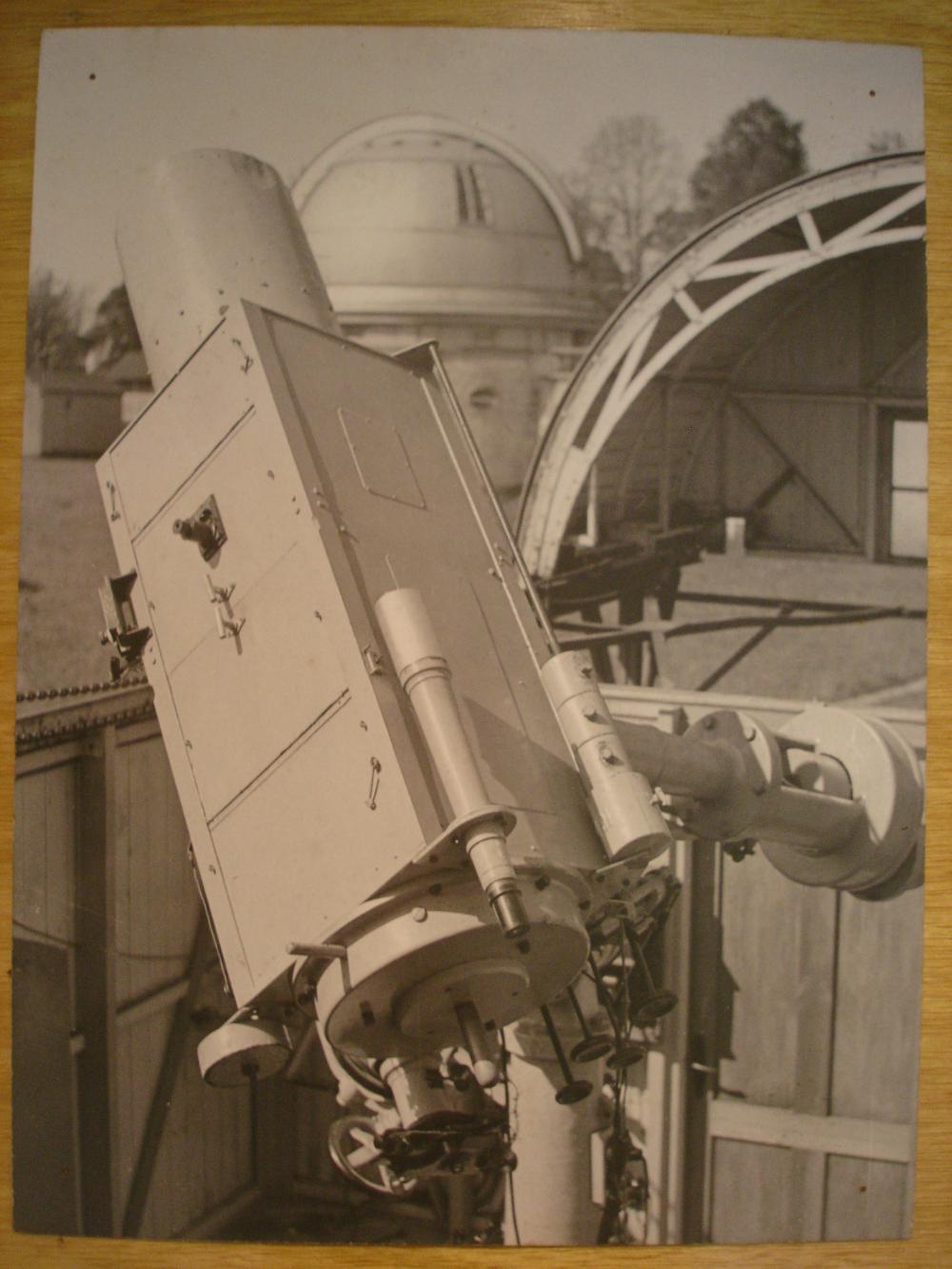
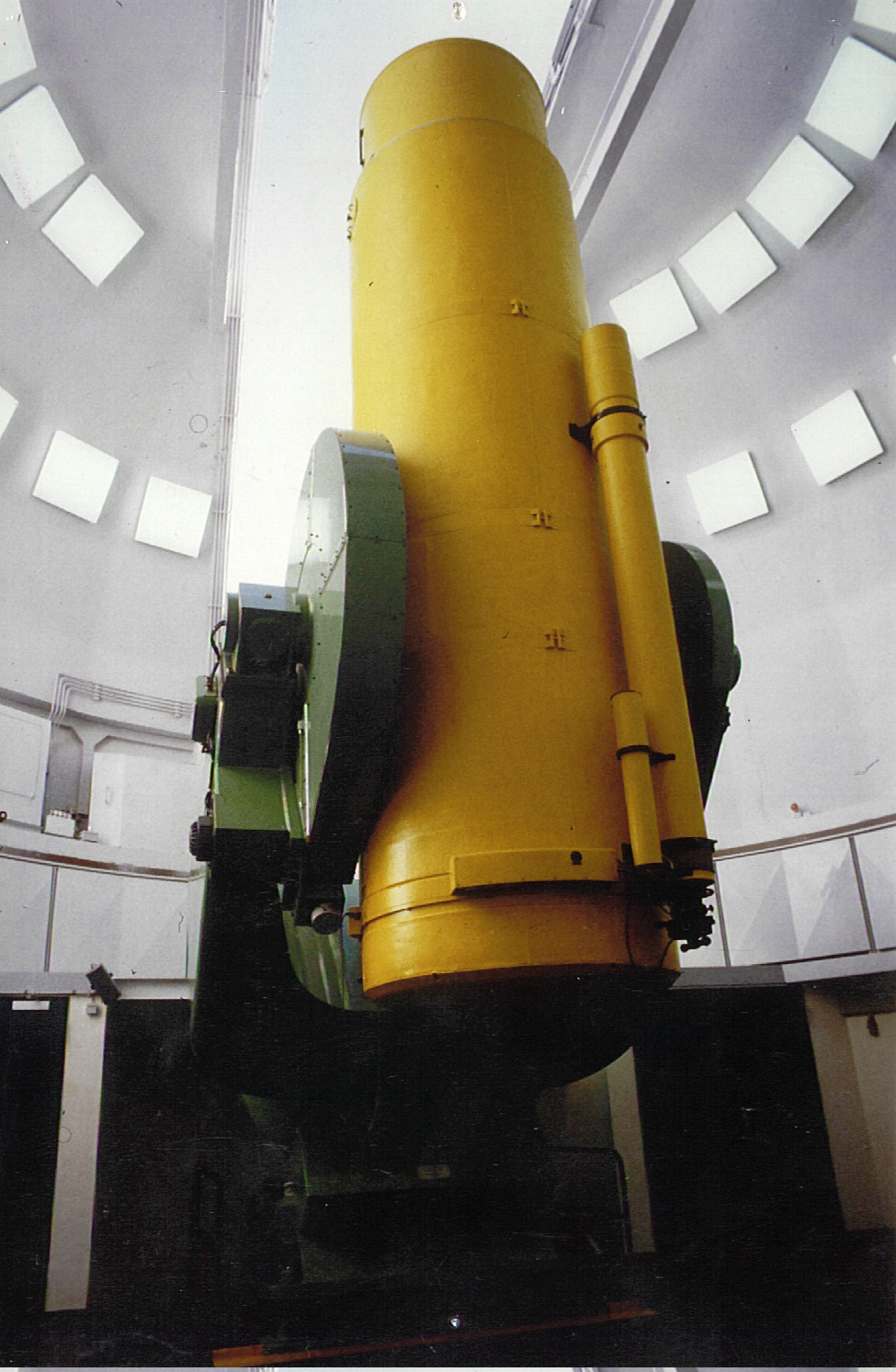
Fig. 7a,b. Original Schmidt Telescope of Hamburg Observatory, 1930, and Large Schmidt Telescope, 1954 (Photo: Gudrun Wolfschmidt, Archive Hamburg Observatory)
Walter Baade (1893--1960) worked at Hamburg Observatory at Bergedorf from 1919 to 1931 and in 1920 he discovered 944 Hidalgo, the first of a class of minor planets now called Centaurs which cross the orbits of giant planets. Baade used the 1-m-reflecting-telescope for photographic work on clusters, galaxies and nebulae; it was crucial for Baade’s work on his two stellar population theory (Population I and Population II). From 1931 to 1958 he worked at Mount Wilson Observatory having access to the large 2.5-m reflecting telescope. In addition he discovered that two types of Cepheid variable stars exist. Based on this discovery he could announce during the 1952 IAU meeting in Rome that the size of the known universe (Hubble 1929), has to be doubled.
Otto Heckmann (1901--1983) was director of Hamburg Observatory from 1941 to 1962. Besides finishing the AGK2 and starting the multi-national project of AGK3, he turned to cosmology and Einsteins’s general theory of relativity; his book "Theorien der Kosmologie" appeared in 1942. He organised the design and construction of the large 80-cm Schmidt telescope for Hamburg Observatory (1954).
After the WWII he started in the 1950s with Jan Hendrik Oort (1900--1992) the founding of the European Astronomical Observatory (ESO) and La Silla Observatory. Heckmann became the first Director General from 1962 to 1968 with the ESO Headquarters in Hamburg-Bergedorf (today in Garching near Munich). From 1967 to 1970 he also served as President of the International Astronomical Union.
Alfred Weigert (1927--1992) started in Hamburg Observatory in 1968 and Sjur Refsdal (1935--2009) in 1972. These were two outstanding theoreticians who two new florishing topics: Weigert with the theory of stellar evolution and his pioneering work of simulation of the development of stars in the computer and Refsdal with the theory of gravitational lensing; Refsdal had started this theme at a time where no observational evidence existed - now it is a hot topic.
The Czech astronomer Lubov{s} Kohoutek (*1935) started after the Soviet occupation of Czechoslovakia (1968) in Hamburg Observatory (retired in 2001). He became well-known for the discovery of numerous comets, especially 75D/Kohoutek, 76P/West-Kohoutek-Ikemura, and "Comet Kohoutek" (C/1973 E1), minor planets and his catalogue of planetary nebulae.
Hamburg Observatory’s excellent and multifaceted instrumentation
The Hamburg observatory was equipped with excellent instruments of both kinds, a large double refractor and a large reflecting telescope (1m) -- large for that time. To this day the large refractor with a lens diameter of 60-cm and a focal length of 9-m belongs still to the largest refractors in the world (optics made by Steinheil). It is the last instrument built by the renowned company Repsold, Hamburg, and the second largest still existing. The raising platform developed and realised by Carl Zeiss Jena considerably facilitated the operation of this large refractor; in addition it was the first large one on the European continent.
The highlight of Hamburg observatory, especially for astrophysics, was the 1-m-reflecting telescope, made by Carl Zeiss Jena, 1911, the first "large" Zeiss telescope in the world, the largest telescope in Germany from 1911 to 1920, and from 1946 to 1960.
It was the world’s third-largest reflecting telescope -- after:
- Mount Wilson 1.5-m (60-inch, mirror blank, cast by Saint-Gobain in France, in 1896, donated by George Ellery Hale, 1904 funding from the Carnegie Institution, 1905/07 grinding, first light on December 8, 1908, built for newtonian, cassegrain and coudé configurations),
- Lowell-Observatory Flagstaff 1.02m (42-inch, Alvan Clark, 1909).
There are two other early reflectors, which did not show a convincing qualitiy:
- 60-inch (1.5m) Andrew Ainslie Common (1841--1903), London-Ealing, 1889 (Harvard College Observatory, Mass., USA, 1904,
in the 1920s with a new mirror in Boyden Observatory, South Africa), - 1-m-reflector, Observatorie de Meudon, France (1891).
Later Zeiss made 1-m-telescopes for Milan-Merate, Italy (1926), Purple Mountain Observatory, Nanjing, China, and Vatikan (60cm, 1932 and 1935), Observatoire de Uccle, Brussels, Belgium (1934, destroyed in WWII), and 1.22-m Berlin-Babelsberg, Zeiss, 1924 (since 1945 Crimean Astrophysical Observatory, Simeiz), 1.2m (Asiago Onservatory (Padua), Italy, 1942).
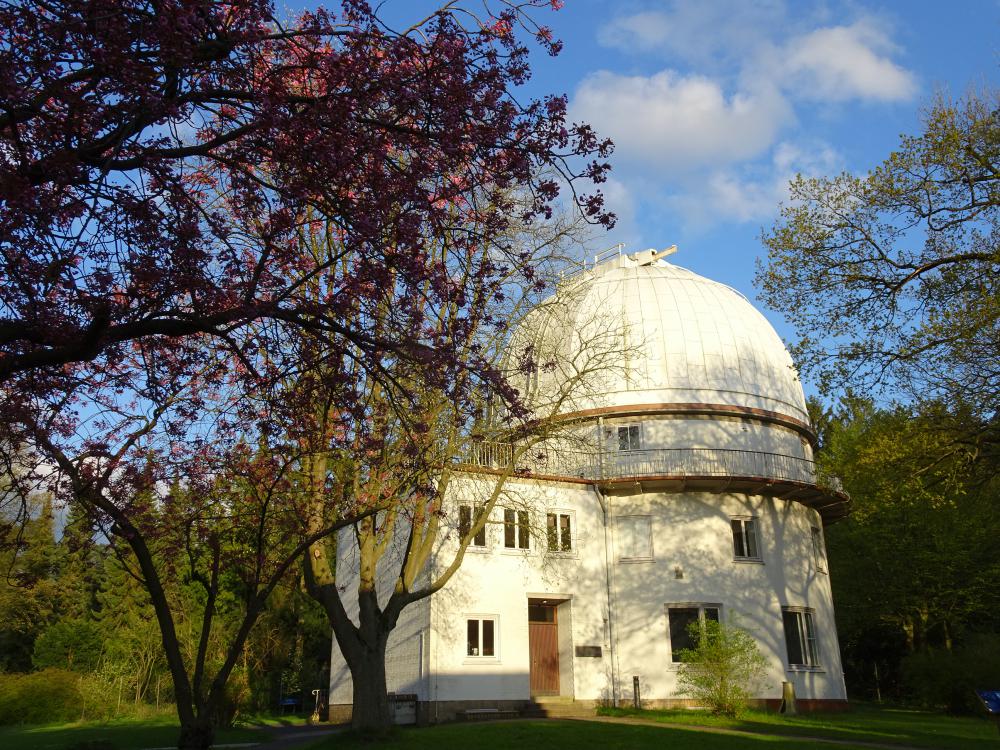
Fig. 8a. OLT Reflecting Telescope (Photo: Gudrun Wolfschmidt)
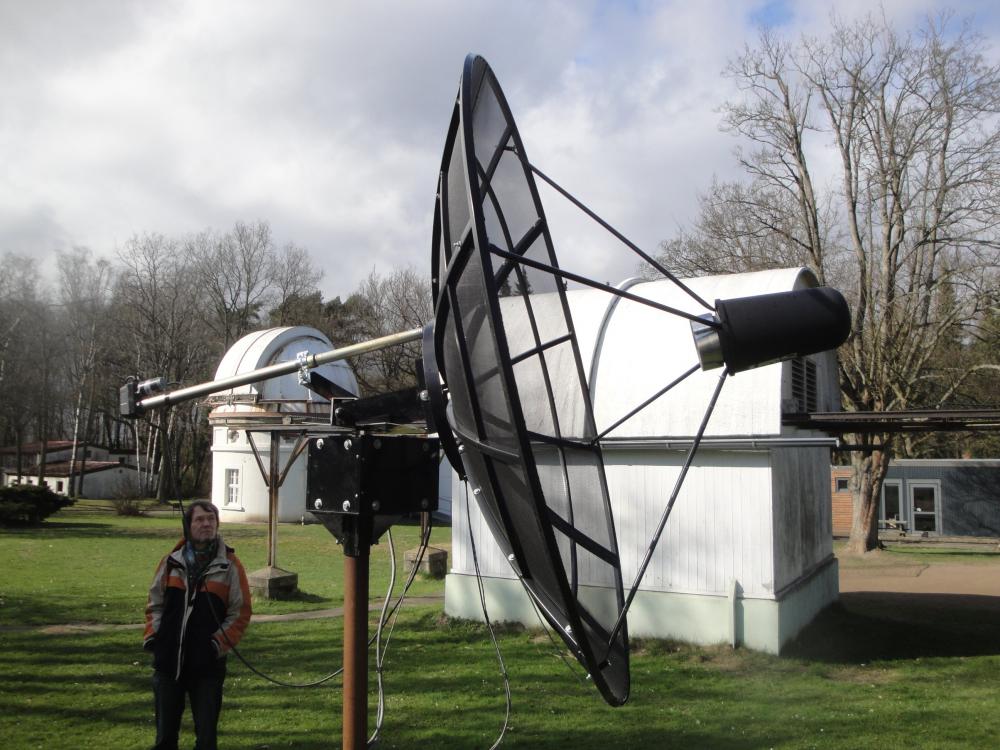
Fig. 8b. Small Radio Telescope (Photo: Gudrun Wolfschmidt)
More Instruments of Hamburg Observatory
- Equatorial, 26cm refractor, 3m focal length, Merz, Munich and Repsold, Hamburg, 1867, with its remarkable wooden observing chair (1867)
- Meridian circle (19-cm objective, 2.3-m focal length, A. Repsold & Söhne, 1907, 130,000 observations, Southern Reference Star catalogue, gathered in Perth Observatory, Australia, since 1967, since 1991/92 exhibited in the Astronomy exhibition in the Deutsches Museum in Munich, it will return in 2022).
- Lippert Astrograph, three astrographs refractors, 34cm objective, 3.4m focal length, Carl Zeiss Jena, funded by Eduard Lippert, used for the "Bergedorfer Spektraldurchmusterung" -- replaced in 1957: 60-cm reflecting telescope, 3m focal length, Optics: Bernhard Schmidt (1934), new Cassegrain-Optics with 9m focal length, made by Lichtenknecker in Belgium (1974).
- AG astrograph (8.5cm objective, focal length 2.06m, 1924), used for the important AGK2 (observed 1913--1920, published 1951--1958) and AGK3 (1956 and published in 1975) catalogues ("AG" = Astronomische Gesellschaft)
- "Schmidt Telescope", invented in 1930 by the Hamburg instrument maker Bernhard Schmidt (1879--1935)
- Large 80-cm-Schmidt telescope, Carl Zeiss Jena, Mounting: Heidenreich & Harbeck, Hamburg, 1954 (since 1975 Calar Alto, Spain)
- 1.2-m-Oskar Lühning telescope (OLT) with Ritchey-Chretien system (focal length in the Cassegrain focus of 15.60m), Grubb, Parsons & Company, 1975, refurbished as robotic telescope in 2001
- Zone astrograph (23cm telescope with 2.05m focal length, Zeiss, Oberkochen, 1973, funded by the Deutsche Forschungsgemeinschaft (DFG), used for Hipparcos satellite’s input data).
- 1.2-m TIGRE Telescope, formerly called Hamburg Robotic Telescope (HRT), 2002/05, with a fibre-fed Echelle spectrograph for the observation and monitoring of activity phenomena on cool stars -- since 2013 TIGRE is in La Luz, astronomical observatory of the University of Guanajuato in central Mexico (altitude 2400m) - a project with University of Liège
- PTST (Planet Transit Survey Telescope) is located on Mallorca
- KRT3 Radio Telescope and the LOFAR Station Norderstedt
Movable instruments: eclipse expedition equipment, Coelostat (1905), Zeiss prism spectrograph, photometer, blink comparator, PDS, laboratory equipment, photographic laboratory for processing glass plates, calculation machines, and computers, etc.
Importance for the history of astronomy / cultural astronomy
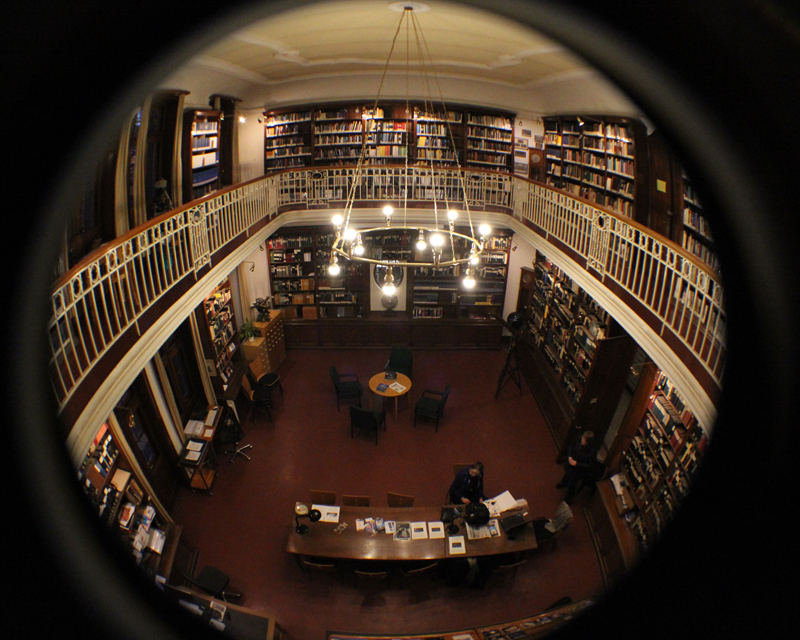
Fig. 9. Library of Hamburg Observatory (Photo: Susanne M. Hoffmann)
Hamburg Observatory had for a long time a leading position in classical astronomy (astrometry) and timekeeping (Hamburg time ball, 1876-1934), but astrophysics (photography, photometry and spectroscopy) and especially solar physics was started by Richard Schorr (1867--1951) around 1900.
The large collection of telescopes is remarkable; one can find all types mountings and all types of telescopes like meridian circle, refractor, astrograph, horizontal solar telescope, reflecting telescope, Schmidt telescope, robotic telescopes, radio astronomy with LOFAR.
Highlights are the introduction of the first large (1-m) reflecting telescope (1911) in Europe after the first three in the USA, and the important invention of the Schmidt telescope in Hamburg Observatory (1930).
Outstanding astronomers were Walter Baade (1893--1960) with the introduction of the two stellar populations and Otto Heckmann (1901--1983) with his emphasis on cosmology and his science organisation work (founding of ESO and first director, president of IAU).
In the second half of 20th century there are the two famous theoretians Alfred Weigert (1927--1992) (theory of stellar evolution) and Sjur Refsdal (1935--2009) (theory of gravitational lesing). With the Czech astronomer Luboš Kohoutek (*1935) Hamburg Observatory became well-known for the discovery of numerous comets, minor planets and his catalogue of planetary nebulae.
State of preservation
Hamburg Observatory has been completely preserved, both as far as the grounds (7 ha astronomy park) with their historic buildings and furnishings and the optical instruments and their technical details are concerned. Therefore, in 1996 the observatory was inscribed in the monument list of the Free and Hanseatic City of Hamburg as an ensemble on the basis of its relevance for the city’s history as well as its cultural and scientific history. In 2008 Hamburg Observatory was declared a cultural monument of national importance.
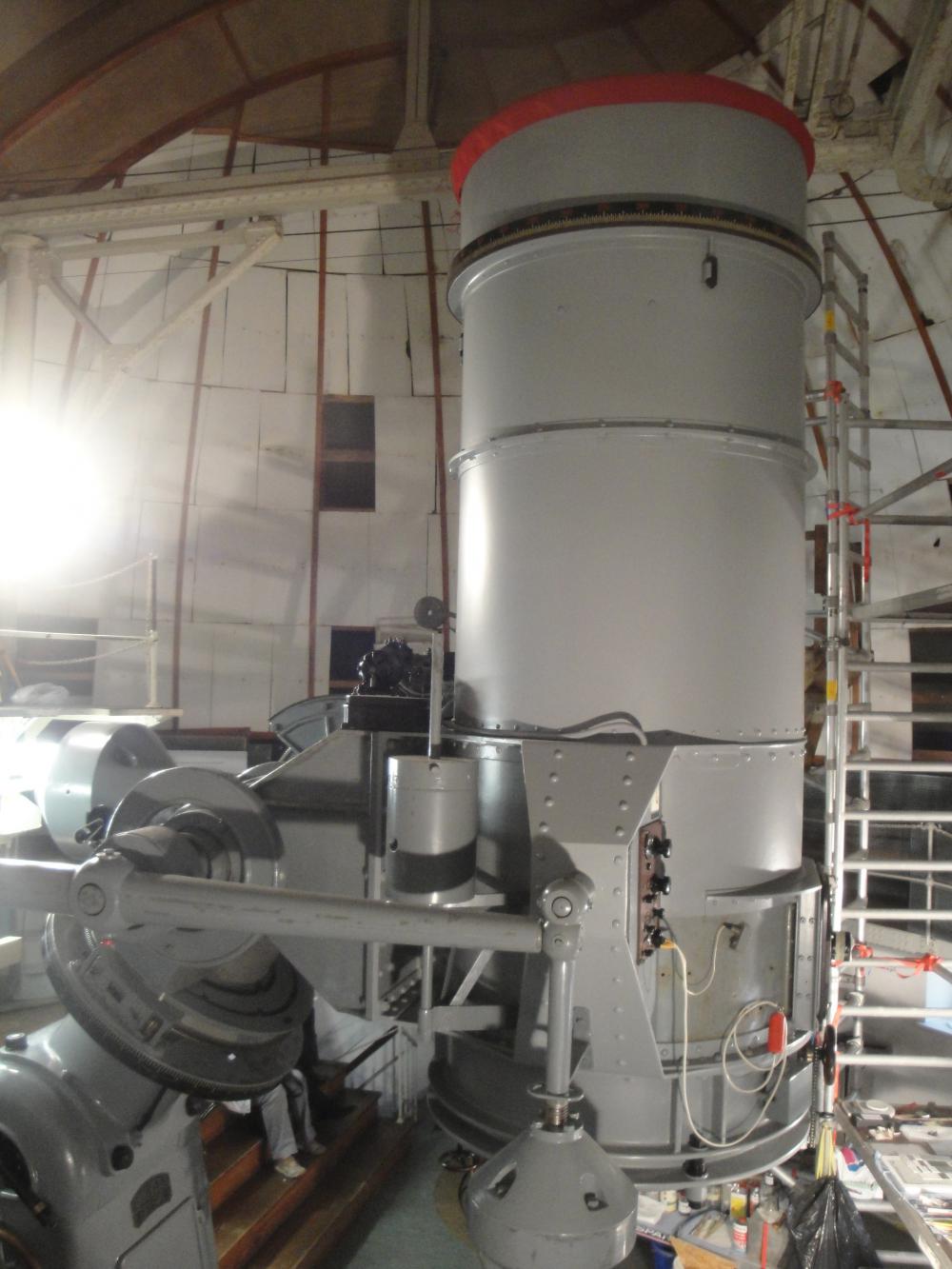
Fig. 10a. The restored 1-m-Reflector of Hamburg Observatory (2011/12) (Photo: Gudrun Wolfschmidt)
Fig. 10b. Restoration of the Large Refractor of Hamburg Observatory (2017/19) (Photo: Wolfgang Thürmer)
The restoration goes on step by step (https://www.fhsev.de/restaur.php):
- Meridian circle building (1998-2000 Deutschen Stiftung Denkmalschutz, 2002/03 Förderverein Hamburger Sternwarte), 2012 -- 1 Mio Euro Konjunkturförderprogramm der BRD
- Equatorial (2004/05 Hamburger Stiftung Denkmalschutz, Bergedorf Stiftung, Stiftung Denkmalpflege Hamburg) -- the Förderverein Hamburger Sternwarte -- association for promoting Hamburg Observatory -- got the "Deutscher Preis für Denkmalschutz" (National award for monument protection) in 2006
- 1-m-Reflecting Telescope building (2008--2010 -- 500.000 Euro,
Reemtsma Foundation, Federal Ministry of Culture’s programme
for cultural monuments of national importance, Deutsche Stiftung Denkmalschutz, Hamburg University, Stiftung Denkmalpflege Hamburg),
Visitor center with café and lecture room (2011 -- 500.000 Euro vom Bezirk Bergedorf),
1-m-Reflecting Telescope (2011/12 -- 150.000 Euro), Deutsche Stiftung Denkmalschutz,
thesis on the instrument’s relevance for the history of science
and technology, prepared by Beatrix Alscher (2006)
- Large Refractor building (2017/19 -- 5 million Euro)
- Lippert Telescope building (2018/21)
- Meridian building restoration (2019), restoration inside, meridian circle,
with an exhibition about "Zeit von den Gestirnen - Geschichte der Navigation"
(Time from the Stars - History of Navigation) (planned for 2022/23).
Comparison with related/similar sites
Observatory not in the city center, but on a hill
Hamburg Observatory is not in the city center like the old Hamburg observatories (Stintfang 1802--1811, Millerntor 1825--1912), but on a small hill "Gojenberg" (45-m, that is enough elevation for an extremely flat countryside) at the border of the city. This idea came up at the end of 19th century, e.g. Astrophysical Observatory Potsdam-Telegraphenberg (1874), Observatoire de Nice, France (1879--1886), La Plata Observatory, Argentina (1883), and Heidelberg-Königstuhl (1896--1900).
Introduction of the Astronomy Parc instead of a building with one or three domes
Hamburg Observatory did not choose a central building with the three domes on the top like the typical architecture was in the 19th century (Pulkovo Observatory, St. Petersburg 1839, Russia), but the new idea of layout, the astronomy park, was used like in Strasbourg (1874), (the large refractor dome is still on the main building), Observatoire de Nice (1879--1886), (only classical astronomy), La Plata, Argentina (1883), (strict separation of the buildings, reflecting telescope, but no Schmidt telescope), Remeis Observatory Bamberg, Stephansberg (1889), (small observatory, but strict separation of the buildings, but no longer today, where the meridian building is replaced by the library and offices), Uccle Observatory Brussels (1891), (nice layout in a large circle, but no consequent sepration: the office buildings are connected to the observatory buildings), EAO Kazan (1901), (with relatively small instruments and no reflector), and Heidelberg-Königstuhl (1896), (which is much smaller than Hamburg).
In Hamburg the astronomy park is realised with a strict separation of observatory domes on one side and the main building with the library and administration, the director’s villa, homes for astronomers, office buildings and the workshop on the other side.
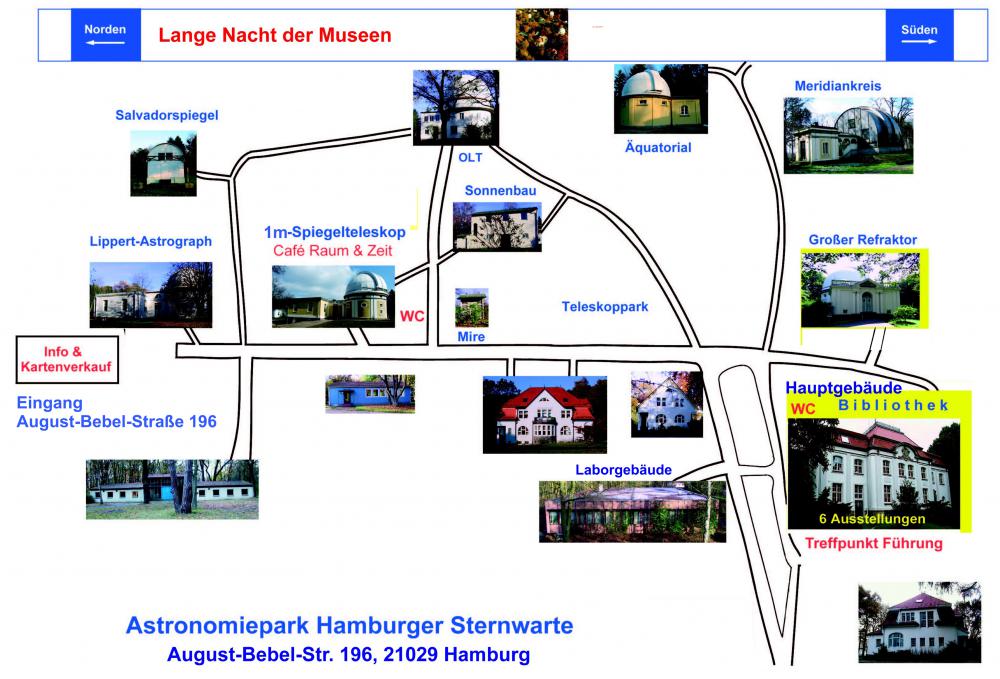
Fig. 12. Astronomy Parc Hamburg Observatory with the first really strict separation of observatory "domes" (also meridian circle building and other smaller observation buildings with roll-off roofs) and office buildings
Transition from classical astronomy to modern astrophysics including solar physics
In this way Hamburg Observatory can be seen as a model observatory for the beginning of astrophysics because of the site (astronomy park, hill at the outskirts of the city) but also because of the instrumentation, especially the choice of a modern reflecting telescope (in addition astrographs for photographing the sky, spectroscopes, photometers, solar physics instruments, and laboratory instruments for processing the data), well suitable for astrophysics, besides the instruments for classical astronomy like the meridian circle and the refractor. Finally the Schmidt telescope, an important and influential invention for improved astrophotography of large fields, was developed in Hamburg Observatory; now one can find Schmidt telescopes all over the world.
In addition Hamburg served as a model for the Caracas and Mérida Observatory in Venezuela (1950s and 1970s) with the whole instrumentation, meridian circle, zenith telescope, double astrograph, large refractor, large reflecting telescope, but also a Schmidt telescope, made by Zeiss of Jena and Askania of Berlin. In the 1950s, Cagigal Observatory in the Venezuelan Andes was started with the instruments for classical astronomy (1959). Due to political problems, the astrophysical observatory Observatorio Astronómico Nacional de Llano del Hato CIDA, 70km from Mérida, was not started before the 1970s.
Similar observatories around 1900 showing the transition from astronomy to astrophysics (more or less) are the following -- the best fitting partner is La Plata:
- Argentina: La Plata Observatory -- astronomy park, classical astronomy and modern astrophysics, a large 80-cm-reflecting telescope, but no Schmidt telescope
- Russia: Engelhardt Astronomical Observatory (EAO), Kazan, Tartastan -- ensemble in an astronomy park but smaller buildings and instruments than Hamburg, there is a Maksutov telescope (like Schmidt telescope for astrophotography), but no reflecting telescope - the main indicator for astrophysics
- Indonesia: Bosscha Observatory, Lembang, Java: astronomy park, Zeiss instruments, Schmidt telescope, no reflector
- Brazil: Rio de Janeiro Observatory, Museu de Astronomia e Ciências afins -- astronomy park, more classical astronomy, no reflector, only museum and public observatory nowadays
- Belgium: Uccle Observatory, Bruxelles, impressive astronomy park, a Zeiss 1-m-reflector, more classical astronomy (astrometry), but also solar physics, astrophotography (1939--1964), and a Schmidt telescope (1958)
- England: Royal Observatory Greenwich (component of WH 795 ``Maritime Greenwich’’) and an astrophysics laboratory building (today used in a different way) -- astronomy park, timekeeping, classical astronomy and astrophysics, no reflector and no Schmidt telescope
- Estonia: Dorpat/Tartu, Old Observatory (component of WH 1187 ``Struve Geodetic Arc’’) -- more classical astronomy
- France: Observatoire Paris, more classical astronomy and no reflecting telescope, and Meudon, no classical astronomy but solar physics in Meudon
- France: Observatoire de la Côte d’Azur, Nice -- astronomy park, more classical astronomy, no reflecting telescope
- India: Kodaikanal Observatory of the Indian Institute of Astrophysics, Bangalore -- solar physics, no classical astronomy
- Portugal: Observatório Astronómico de Lisboa -- more classical astronomy, in addition solar physics
- Russia: Nikolas Central Astronomical Observatory Pulkovo, St. Petersburg (component of WH 540 ``Historic Centre of Saint Petersburg and Related Groups of Monuments’’) and an astrophysics building -- astronomy park, classical astronomy and astrophysics and radio astronomy, no reflector, no Schmidt telescope
- USA: US Naval Observatory (USNO), Washington D.C. -- astronomy park, classical astronomy is dominant
- Canada: Dominion Observatory, Ottawa (Ontario), 1902--1970, and Dominion Astrophysical Observatory, Victoria (British Columbia), 1918 -- no classical astronomy, but important for astrophysics, a large reflecting telescope, no Schmidt telescope.
Threats or potential threats
So far no threats. The observatory is in a neighborhood of villas; there are no factories or industrial companies nearby (to the West, there is the city center of Hamburg, but in a distance of 25 km). The Bergedorf cemetary is next to the observatory, then there is the border of Hamburg, and behind there is agricultural environment only (Vier- und Marschlande), where vegetables and fruits for Hamburg are produced. There is also not much light pollution; the city electrical lights are dimmed near the observatory, only in the direction of the city of Hamburg in the west, one cannot observe.
Present use
In 1968, Hamburg Observatory was integrated in the University of Hamburg. And still nowadays Hamburg Observatory is an institute of the physics department and this is part of the MIN Faculty for Mathematics, Computer Science and Natural Sciences (Mathematik, Informatik und Naturwissenschaften) of the University of Hamburg.
See also Cultural Heritage and Collections of Hamburg Observatory - since 2021 a possible aspirant for the UNESCO world heritage list.
In addition there is café and restaurant and a visitor center in the 1-m-telescope-building, offering guided tours every weekend.
Then there is a Montessori School in the Lippert building.
The Förderverein Hamburger Sternwerte (FHS, webpage https://www.FHSev.de), an association for promoting Hamburg Observatory like a public observatory, offers many events: e.g. events in 2021 and events in 2022 like monthly lectures, star gazing, guided tours, public events for solar and lunar eclipses or Venus transit, several exhibitions (e.g. From Copernicus to the Modern World View, Bernhard Schmidt Museum), Long night of museums, Day of the open house, Day of monument protection, Night of Science, Lyric moon night.
Astronomical relevance today
Hamburg Observatory is a leading research institute with 7 professors with a wide range of modern topics like Stellar Astrophysics (Observations and Theory), Interstellar Medium and Galaxies, Extragalactic Astrophysics and Cosmology, High Performance Computing, Observational Methods and Instrumentation: Research Topics:
- Stars, Planets and Compact Objects
- Interstellar Medium and Galaxies
- Extragalactic Astrophysics and Cosmology
- Instruments and Data Science
- High Performance Computing
- History of Science
Besides the historical instruments in Hamburg Observatory, especially the OLT is still used for science, there are more Telescopes for research and teaching, e.g. also outside of Hamburg and Germany, e.g. in Calar Alto, Spain (80-cm-Schmidt telescope, since 1975). All these telescopes are operated semi-automatically and are remotely controlled:
- Oskar-Lühning-Telescope (OLT) - Ritchey-Chretien-System, with a 1.20m opening and a focal distance of 15.60m (1975) in the dome and on the mounting of the Large Schmidt Telescope (1954)
- 1.2-m TIGRE Telescope, formerly called Hamburg Robotic Telescope (HRT), 2002/05, with a fibre-fed Echelle spectrograph for the observation and monitoring of activity phenomena on cool stars -- since 2008/13 in La Luz, astronomical observatory of the University of Guanajuato in central Mexico (altitude 2400m)
- PTST (Planetary Transit Survey Telescope) is located on Mallorca, Spain. In 2011, a CDK24 was installed for the University of Hamburg for the purpose of follow-up studies of the transit of the exoplanet star Qatar-1.
- Radioastronomy: KRT3 Radio Telescope
- LOFAR Station in Norderstedt: Europe-wide LOFAR interferometer in Norderstedt, in the North of Hamburg in Schleswig-Holstein.
- Star Formation and Magnetohydrodynamics Group (Group Banerjee)
- Extragalactic Astrophysics Group (Group Brüggen)
- Radio Astronomy Group (Group de Gasperin)
- Radiative Transfer Simulations Group (Group Hauschildt)
- Observational Astronomy Group (Group Liske)
- Instrumentation Group (Group Wiedemann)
- History of Science (Group Wolfschmidt)
And in addition Hamburg astronomers can get observing time at international observatories like ESO or ALMA (radio interferometer in the mm-range) in Chile, and for satellites like (e.g. HST, X-ray like XMM-Newton and IR telescopes like SOFIA, and Planck satellite for mapping of the cosmic microwave background) and in the future the 30-m-ELT (Extremely Large Telescope, ESO) or James Webb Space Telescope (WEBB/JWST, NASA).
Hamburg Observatory is also teaching within the Department of Physics and offers the training and the range of lectures and seminars on astronomy/astrophysics for undergraduates and graduates, as well as for B.Sc./M.Sc. and PhD students (Research Training Group, "Graduiertenkolleg"). In addition lectures for the general public are presented or astronomy workshops and holiday courses for school children.
References
Bibliography (books and published articles)
Publications about the History of Hamburg Observatory and the Early Astronomer’s Work
- Abalakin, Viktor: Über die Astronomendynastie Struve aus Hamburg-Altona. In: Wolfschmidt, Gudrun (Hg.): Hamburgs Geschichte einmal anders - Entwicklung der Naturwissenschaften, Medizin und Technik, Teil 3. Hamburg: tredition science (Nuncius Hamburgensis; Band 20) 2011, S. 28-61.
- Anderson, S.R. & Dieter Engels: A short history of Hamburg Observatory. In: Journal of the British Astronomical Association 114 (2004), no. 2, p. 78.
- Bergman, G. F. J.: Christian Carl Ludwig Rümker (1788-1862), Australia’s First Government Astronomer. In: Journal and Proceedings (Royal Australian Historical Society) 46 (1960).
- Bergman, G. F. J.: Rümker, Christian Carl Ludwig (1788-1862). In: Australian Dictionary of Biography, National Centre of Biography, Australian National University 1967, http://adb.anu.edu.au/biography/rumker-christian-carl-ludwig-2615/text3607, accessed online 11 June 2018.
- Busch, Carsten: Kosmische Linsen bündeln das Licht ferner Welten - Ein kurzer Überblick über die Geschichte der Gravitationslinsenforschung. In: Wolfschmidt, Gudrun (Hg.): Entwicklung der Theoretischen Astrophysik. Hamburg: tredition (Nuncius Hamburgensis; Band 4) 2011, S. 196-213.
- Dahmke, S.K.G.: On the history of the Hamburg Observatory. Conference published at the Proceedings of the Magellan Workshop: Connecting Neutrino Physics and Astronomy. Hamburg, Germany (2016). p.196.
- Groote, Detlef: Der digitale Hamburger Himmel In: Wolfschmidt, Gudrun (Hg.): Kometen, Sterne, Galaxien - Astronomie in der Hamburger Sternwarte. Zum 100jährigen Jubiläum der Hamburger Sternwarte in Bergedorf. Hamburg: tredition (Nuncius Hamburgensis; Bd. 24) 2014, 452-467.
- Heckmann, Otto: Die Arbeiten der Hamburger Sternwarte in Bergedorf. In Lichtwark Nr. 7. Bergedorf 1953.
- Høg, Erik: Astrometry 1960-1980: from Hamburg to Hipparcos. In: Wolfschmidt, Gudrun (Hg.): Kometen, Sterne, Galaxien - Astronomie in der Hamburger Sternwarte. Zum 100jährigen Jubiläum der Hamburger Sternwarte in Bergedorf. Hamburg: tredition (Nuncius Hamburgensis; Bd. 24) 2014, S. 84-153.
- Hünsch, Matthias: Die Bergedorfer Spektraldurchmusterung. In: Wolfschmidt, Gudrun (Hg.): Kometen, Sterne, Galaxien - Astronomie in der Hamburger Sternwarte. Zum 100jährigen Jubiläum der Hamburger Sternwarte in Bergedorf. Hamburg: tredition (Nuncius Hamburgensis; Bd. 24) 2014, S. 154-173.
- Kippenhahn, Rudolf: Nachrufe: Alfred Weigert. In: Mitteilungen der Astronomischen Gesellschaft Hamburg 76 (1993), p. 11.
- Koch, Jürgen W.: Der Briefwechsel zwischen Johann Caspar Horner und Johann Georg Repsold. Norderstedt: BoD 1999.
- Koch, Jürgen W.: Der Briefwechsel zwischen Friedrich Wilhelm Bessel und Johann Georg Repsold. Norderstedt: BoD 2000.
- Koch, Jürgen W.: Der Briefwechsel von Johann Georg Repsold mit Carl Friedrich Gauß und Heinrich Christian Schumacher. Norderstedt: BoD 2000.
- Koch, Jürgen W.: Der Hamburger Spritzenmeister und Mechaniker Johann Georg Repsold (1770-1830), ein Beispiel für die Feinmechanik im norddeutschen Raum zu Beginn des 19. Jahrhunderts. Norderstedt: Books on Demand 2001.
- Koch, Jürgen W.: Die restlichen, noch nicht publizierten Briefe von und an Johann Georg Repsold (1770-1830) - Kommentierte Übertragung der Brieftexte. Norderstedt: BoD 2010.
- Kunzmann, Björn: Real and Virtual Heritage - Historical Astronomical Plate Archives in Sonneberg, Bamberg and Hamburg. Observatories, the Evolution of Astrophysics and their Influence on Human Knowledge and Culture. In: Wolfschmidt, Gudrun (ed.): Astronomical Observatories 2009, S. 304-309.
- Kunzmann, Björn: Veränderliche Sterne und ihre Bedeutung für die Entwicklung der Astrophysik. In: Wolfschmidt, Gudrun (Hg.): Entwicklung der Theoretischen Astrophysik. Hamburg: tredition (Nuncius Hamburgensis; Band 4) 2011, S. 282-321.
- Kunzmann, Björn: Die Erforschung Veränderlicher Sterne in der Hamburger Sternwarte. In: Wolfschmidt, Gudrun (Hg.): Kometen, Sterne, Galaxien - Astronomie in der Hamburger Sternwarte. Zum 100jährigen Jubiläum der Hamburger Sternwarte in Bergedorf. Hamburg: tredition (Nuncius Hamburgensis; Bd. 24) 2014, S. 262-287.
- Osterbrock, Donald E.: Walter Baade: A Life in Astrophysics. Princeton: Princeton University Press 2001.
- Quadejacob, Lars: Hundertjähriger Wissenschaftspark: Sternwarte Bergedorf. In: Jahrbuch Architektur in Hamburg 2011. Hamburg: Junius Verlag 2011, S. 138-147.
- Reimers, Dieter: Geschichte und Zukunft der Hamburger Sternwarte. In: Wolfschmidt, Gudrun (ed.): Astronomical Observatories 2009, S. 318-325.
- Rümker, George: Sternwarte. In: Jahrbuch der Hamburgischen Wissenschaftlichen Anstalten, 2. Jg. (1885).
- Schorr, Richard: Anzeige des Todes von George Friedrich Wilhelm Rümker. In: Astronomische Nachrichten 152 (1900), S. 127.
- Schorr, Richard: Einleitung zum Jahresbericht der Sternwarte Bergedorf für das Jahr 1906 ("The annual report for the Bergedorf Observatory for 1906). English Translation by Hamburg Observatory.
- Schramm, Jochen mit Beiträgen von Gudrun Wolfschmidt, Matthias Hünsch und Dieter Engels: Sterne über Hamburg. Die Geschichte der Astronomie in Hamburg. Hamburg: Kultur- und Geschichtskontor 1996, neue Auflage 2010.
- Schramm, Jochen & Thomas Schramm: Die Bergedorfer Sternwarte im Dritten Reich. In: Lichtwark-Heft Nr. 58. Hg. Lichtwark-Ausschuß, Hamburg-Bergedorf 1993.
- Seemann, Agnes: Die Hamburger Sternwarte in Bergedorf. In: Lichtwark-Heft Nr. 73. Hamburg-Bergedorf: Verlag HB-Werbung 2008.
- Seemann, Agnes: The Hamburg Observatory - A Cultural Monument of National and International Importance. In: Wolfschmidt, Gudrun (ed.): Astronomical Observatories 2009, S. 326-331.
- Weigert, Alfred: Hamburger Sternwarte 1833--1983. In: 150 Jahre Hamburger Sternwarte. uni hh Forschung, Nr.~XVI (1983), p.~8.
- Wolfschmidt, Gudrun: Genese der Astrophysik. Habilitationsschrift - Ludwig-Maximilians-Universität München 1997 (780 Seiten).
- Wolfschmidt, Gudrun: Popularisierung der Astronomie: Instrumente, Sternwarten, Planetarien. In: Wolfschmidt, Gudrun (Hg.): Popularisierung der Naturwissenschaften. Diepholz/Berlin: GNT-Verlag (Verlag für Geschichte der Naturwissenschaft und der Technik) 2002, S. 98-121.
- Wolfschmidt, Gudrun: Sterne über Hamburg - Höhepunkte der Entwicklung der Astronomie im 19. und 20. Jahrhundert. In: Wolfschmidt, Gudrun (Hg.): Hamburgs Geschichte einmal anders - Naturwissenschaft, Medizin und Technik in Hamburg, Teil 1. Norderstedt: Books on Demand (Nuncius Hamburgensis; Bd. 2) 2007, S. 102-137.
- Wolfschmidt, Gudrun: Stiftungen zugunsten der Hamburger Sternwarte(n). Wolfschmidt, Gudrun (Hg.): Astronomisches Mäzenatentum. Proceedings des Symposiums in der Kuffner-Sternwarte in Wien, 7.-9. Oktober 2004: Astronomisches Mäzenatentum in Europa. Norderstedt: Books on Demand (Nuncius Hamburgensis; Band 11) 2008, S. 30-51.
- Wolfschmidt, Gudrun (ed.): Cultural Heritage: Astronomical Observatories (around 1900) - From Classical Astronomy to Modern Astrophysics. Proceedings of International ICOMOS Symposium, organized by Gudrun Wolfschmidt, Hamburg, October 15-17, 2008. Berlin: Hendrik Bäßler (Monuments and Sites; Nr. XVIII) 2009.
- Wolfschmidt, Gudrun & Henry Schlepegrell: Restoration Activities of the Observatory Buildings - Past and Future. In: Wolfschmidt, Gudrun (ed.): Astronomical Observatories 2009, S. 323-337.
- Wolfschmidt, Gudrun: Die Hamburger Sternwarte - Der Weg zum Weltkulturerbe? In: Schramm 2010, S. VI-XI.
- Wolfschmidt, Gudrun: Farben in der Astronomie - Vom Regenbogen zur Spektroskopie. In: Wolfschmidt, Gudrun (Hg.): Farbe in Kulturgeschichte und Naturwissenschaft. Katalog zur Ausstellung in Hamburg 2010 zum 50jährigen Jubiläum des IGN. Hamburg: tredition (Nuncius Hamburgensis; Band 18) 2011, S. 150/151-173.
- Wolfschmidt, Gudrun: Colours in Astronomy - Spectra and False-colour images. In: Wolfschmidt, Gudrun (ed.): Colours in Culture and Science. 200 Years Goethe’s Colour Theory. Proceedings of the Interdisciplinary Symposium in Hamburg, October 12-15, 2010. Hamburg: tredition science (Nuncius Hamburgensis; Bd. 22) 2011, S. 178/179-207.
- Wolfschmidt, Gudrun: Die Hamburger Sternwarte in Bergedorf - zwischen Tradition und Moderne. Forschungsverbund zur Kulturgeschichte Hamburgs 1848-1933 (FKGHH). In: Hempel, Dirk und Ingrid Schröder (Hg.): ANDOCKEN. Hamburgs Kulturgeschichte 1848 bis 1933. Unter Mitwirkung von Norbert Fischer, Anna-Maria Götz, Johanna Meyer-Lenz, Mirko Nottscheid, Myriam Richter und Bastian Wecke. Hamburg: DOBU-Verlag 2012, S. 196-204.
- Wolfschmidt, Gudrun: Geschichte und Zukunft der Hamburger Sternwarte. In: Der Weg zu einer Metropole des Wissens. Beiträge zur Geschichte des mathematisch-naturwissenschaftlichen Unterrichts. Erschienen zum 104. MNU-Bundeskongress 2013 in der Freien und Hansestadt Hamburg. Hg. vom Deutschen Verein zur Förderung des Mathematisch-Naturwissenschaftlichen Unterricht (MNU). Hamburg 2013, S. 40-49.
- Wolfschmidt, Gudrun (Hg.): Sonne, Mond und Sterne -- Meilensteine der Astronomiegeschichte. Zum 100jährigen Jubiläum der Hamburger Sternwarte in Bergedorf. Hamburg: tredition (Nuncius Hamburgensis; Bd. 29) 2013.
- Wolfschmidt, Gudrun: Meilensteine der Astronomie in Hamburg vom 17. bis zum 21. Jahrhundert. In: Wolfschmidt, Gudrun (Hg.): Sonne, Mond und Sterne -- Meilensteine der Astronomiegeschichte. Zum 100jährigen Jubiläum der Hamburger Sternwarte in Bergedorf. Hamburg: tredition (Nuncius Hamburgensis; Bd. 29) 2013, S. 12-55.
- Wolfschmidt, Gudrun (Hg.): Kometen, Sterne, Galaxien - Astronomie in der Hamburger Sternwarte. Zum 100jährigen Jubiläum der Hamburger Sternwarte in Bergedorf. Hamburg: tredition (Nuncius Hamburgensis; Bd. 24) 2014.
- Wolfschmidt, Gudrun: Sonnenfinsternisexpeditionen der Hamburger Sternwarte. In: Wolfschmidt, Gudrun (Hg.): Kometen, Sterne, Galaxien - Astronomie in der Hamburger Sternwarte. Zum 100jährigen Jubiläum der Hamburger Sternwarte in Bergedorf. Hamburg: tredition (Nuncius Hamburgensis; Bd. 24) 2014, S. 308-341.
- Wolfschmidt, Gudrun: Otto Heckmanns Aktivitäten in der Sonnenphysik im Zweiten Weltkrieg. In: Wolfschmidt, Gudrun (Hg.): Kometen, Sterne, Galaxien - Astronomie in der Hamburger Sternwarte. Zum 100jährigen Jubiläum der Hamburger Sternwarte in Bergedorf. Hamburg: tredition (Nuncius Hamburgensis; Band 24) 2014, S. 374-417.
- Wolfschmidt, Gudrun: Learning by Doing - Science Education in Hamburg Observatory. Proceedings of the 9th International Conference for the History of Science in Science Education, Flensburg, 2012. Enabling Scientific Understanding through Historical Instruments and Experiments in Formal and Non-Formal Learning Environments. Ed. by Peter Heering, Stephen Klassen and Don Metz. Heidelberg: Springer - Interchange, Volume 46, Issue 1 (2015), p. 57-71
- Wolfschmidt, Gudrun (ed.): Enhancing University Heritage-Based Research. Proceedings of the XV Universeum Network Meeting, University of Hamburg, Germany, June 12-14, 2014. Hamburg: tredition (Nuncius Hamburgensis; Band 33) 2016.
- Wolfschmidt, Gudrun: Popularisierung der Astronomie - Sternwarten, Planetarien, Ausstellungen, Medien. In: Popularisierung der Astronomie - Popularisation of Astronomy. Hg. von Gudrun Wolfschmidt. Hamburg: tredition (Nuncius Hamburgensis; Bd. 41) 2017, S. 18-93.
- Wolfschmidt, Gudrun: 400 Jahre Astronomie in Hamburg - Von Tycho Brahe bis zur Hamburger Sternwarte. In: Natur und Wissen - Mitteilungen aus dem Naturwissenschaftlicher Verein in Hamburg, 15 (2019), Heft 16, S. 4-6.
- Wolfschmidt, Gudrun: Heritage of Astronomical Observatories in the context of the Thematic Initiative on Heritage of "Astronomy, Science and Technology". In: Proceedings of the Conference in Kazan (Dez. 2019). "Historical, Cultural and Scientific Heritage of Astronomical Observatories: Formation of the Outstanding Universal Value of Sites". Heritage and Modern Times 3 (2020), No. 3, p. 17-29, https://nasledie.elpub.ru/jour/article/view/43/43.
- Wolfschmidt, Gudrun: Cultural Heritage of Observatories in the Context with the IAU-UNESCO Initiative - Highlights in the Development of Architecture. In: Advancing Cultural Astronomy: Studies in Honour of Clive Ruggles. Ed. by Efronsyni Boutsikas, Steve McCluskey & John Steele. New York, Berlin, Heidelberg: Springer 2021.
Publications about special Instruments (including restoration) and Models
- Alscher, Beatrix: Das 1m-Spiegelteleskop der Hamburger Sternwarte - Handwerkliche Meisterleistung für die wissenschaftliche Forschung. In: Wolfschmidt, Gudrun (Hg.): Kometen, Sterne, Galaxien - Astronomie in der Hamburger Sternwarte. Zum 100jährigen Jubiläum der Hamburger Sternwarte in Bergedorf. Hamburg: tredition (Nuncius Hamburgensis; Bd. 24) 2014, S. 224-247.
- Alscher, Beatrix: The 1m-Reflector of the Hamburg Observatory: an Object of Technical Heritage - a Preservation Concept. In: Wolfschmidt, Gudrun (ed.): Astronomical Observatories 2009, S. 292/293-303.
- Hünsch, Matthias: The Telescopes of Hamburg Observatory - History and Present Situation. In: Wolfschmidt, Gudrun (ed.): Astronomical Observatories 2009, S. 274-283.
- Keller, Ruth & Beatrix Alscher: Farben an Technischem Kulturgut - Bedeutung und Restaurierung. In: Wolfschmidt, Gudrun (ed.): Colours in Culture and Science. 200 Years Goethe’s Colour Theory. Proceedings of the Interdisciplinary Symposium in Hamburg, Oct. 12-15, 2010. Hamburg: tredition (Nuncius Hamburgensis; Band 22) 2011, S. 94/95-107.
- Kost, Jürgen: Die ├äquatoreale der Firma Repsold in Hamburg. In: Wolfschmidt, Gudrun (Hg.): Hamburgs Geschichte einmal anders - Entwicklung der Naturwissenschaften, Medizin und Technik, Teil 3. Hamburg: tredition science (Nuncius Hamburgensis; Band 20) 2011, S. 62-77.
- Kost, Jürgen: Wissenschaftlicher Instrumentenbau der Firma Merz in München (1838--1932). Bearbeitet und herausgegeben von Gudrun Wolfschmidt. tredition (Nuncius Hamburgensis; Band 40) 2015.
- Lux, Manfred: Die Uhren der Sternwarte Hamburg. In: Wolfschmidt, Gudrun (Hg.): Kometen, Sterne, Galaxien - Astronomie in der Hamburger Sternwarte. Zum 100jährigen Jubiläum der Hamburger Sternwarte in Bergedorf. Hamburg: tredition (Nuncius Hamburgensis; Bd. 24) 2014, S. 60-69.
- Machoczek, Detlev: Der Hamburger Zeitball - Ein Zeitsignal für die Schifffahrt. In: Wolfschmidt, Gudrun (Hg.): Hamburgs Geschichte einmal anders - Entwicklung der Naturwissenschaften, Medizin und Technik, Teil 3. Hamburg: tredition science (Nuncius Hamburgensis; Band 20) 2011, S. 78/79-89.
- Machoczek, Detlev: Zeitdienst und Zeitball. In: Wolfschmidt, Gudrun (Hg.): Kometen, Sterne, Galaxien - Astronomie in der Hamburger Sternwarte. Zum 100jährigen Jubiläum der Hamburger Sternwarte in Bergedorf. Hamburg: tredition (Nuncius Hamburgensis; Bd. 24) 2014, S. 70-83.
- Wolfschmidt, Gudrun: Die Weiterentwicklung von Abbes Geräten bei Zeiss/Jena und ihre Bedeutung für die Astronomie in der ersten Hälfte des 20. Jahrhunderts. In: Stolz, R. & J. Wittig (Hg.): Carl Zeiss und Ernst Abbe - Leben, Wirken und Bedeutung. Jena: Universitätsverlag 1993, S. 331-362.
- Wolfschmidt, Gudrun: ,,Sterne weisen den Weg’’ - Geschichte der Navigation. Katalog zur Ausstellung in Hamburg und Nürnberg. Norderstedt: Books on Demand (Nuncius Hamburgensis; Band 15) 2009.
- Wolfschmidt, Gudrun: Astronomische Modelle in den Sammlungen der Hamburger Sternwarte. In: Ludwig, David; Weber, Cornelia und Oliver Zauzig (Hg.): Das materielle Modell. Objektgeschichten aus der wissenschaftlichen Praxis. Paderborn: Wilhelm Fink-Verlag 2014, S. 179-189.
- Wolfschmidt, Gudrun: Hamburger Sternwarte. Wissenschaftliche Instrumente, Archiv und Schmidt Museum. Scientific Instruments, Archive and Schmidt Museum. In: Entdecken und Staunen. Wissenschaftliche Sammlungen - Scientific Collections. Hamburg 2014, S. 50-53.
- Wolfschmidt, Gudrun und Jürgen Kost: The Merz Company - A Global Player of the 19th Century. In: Merz Telescopes - A Global Heritage Worth Preserving. Ed. by Ileana Chinnici. Heidelberg, Berlin, New York: Springer (Historical & Cultural Astronomy) 2017, Chapter 2, p. 19-38.
- Wolfschmidt, Gudrun: Vom Abakus zum Computer - Geschichte der Rechentechnik, Teil 1. Begleitbuch zur Ausstellung ,,Geschichte der Rechentechnik’’ 2015-2018. From Abacus to Computer - History of Computing, Part 1. Hamburg: tredition (Nuncius Hamburgensis - Beiträge zur Geschichte der Naturwissenschaften; Band 21) 2019.
- Wolfschmidt, Gudrun: Einleitung - Uhren und Zeitmessung in der Hamburger Sternwarte. In: Prignitz, Chr., hg. von G. Wolfschmidt: Zeit für Hamburg. Hamburg: tredition (Nuncius Hamburgensis; Bd. 56) 2021, S. 10--23.
- Wolfschmidt, Gudrun: Anhang: Historisches Uhrenverzeichnis der Hamburger Sternwarte.
In: Prignitz, Chr., hg. von G. Wolfschmidt: Zeit für Hamburg.
Hamburg: tredition (Nuncius Hamburgensis; Bd. 56) 2021, S. 84--94.
Publications about Bernhard Schmidt and the Schmidt telescope
- Ceragioli, Roger & Walter Stephani: Optiken für die Hamburger Sternwarte. Bernhard Schmidt und Richard Schorr - Zeugnisse und Ergebnisse einer Zusammenarbeit. In: Wolfschmidt, Gudrun (Hg.): Kometen, Sterne, Galaxien - Astronomie in der Hamburger Sternwarte. Zum 100jährigen Jubiläum der Hamburger Sternwarte in Bergedorf. Hamburg: tredition (Nuncius Hamburgensis; Bd. 24) 2014, S. 342-365.
- Ceragioli, Roger & Walter Stephani: Alle Briefschreiberei ist sowieso eine große Plage bei mir - Dokumente zum Leben Bernhard Schmidts und das Digitale Bergedorfer Bernhard-Schmidt-Archiv. In: Wolfschmidt, Gudrun (Hg.): Astronomie in Franken - Von den Anfängen bis zur modernen Astrophysik - 125 Jahre Dr. Karl Remeis-Sternwarte Bamberg (1889). Proceedings der Tagung des Arbeitskreises Astronomiegeschichte in der Astronomischen Gesellschaft 2014. Hamburg: tredition (Nuncius Hamburgensis; Bd. 31) 2015, S. 610-629.
- Dufner, Barbara: ,,Den Himmel fest im Blick. Eine wissenschaftliche Biografie über den Astro-Optiker Bernhard Schmidt.’’ Stuttgart: Franz Steiner (Studien zur modernen Geschichte, Band 56) 2002.
- Korte, Ansgar: Briefe von Bernhard Schmidt an den Solinger Fabrikanten Max Linder In: Wolfschmidt, Gudrun (Hg.): Kometen, Sterne, Galaxien - Astronomie in der Hamburger Sternwarte. Zum 100jährigen Jubiläum der Hamburger Sternwarte in Bergedorf. Hamburg: tredition (Nuncius Hamburgensis; Bd. 24) 2014, S. 366-373.
- Schramm, Jochen: Der Große Hamburger Schmidtspiegel In: Wolfschmidt, Gudrun (Hg.): Kometen, Sterne, Galaxien - Astronomie in der Hamburger Sternwarte. Zum 100jährigen Jubiläum der Hamburger Sternwarte in Bergedorf. Hamburg: tredition (Nuncius Hamburgensis; Bd. 24) 2014, S. 418-449.
- Wolfschmidt, Gudrun: Bernhard Schmidt and the Development of the Schmidt Telescope. In: Astronomische Nachrichten - Astronomical Notes 330 (2009), No. 6, p. 555-561.
- Wolfschmidt, Gudrun: Bernhard Schmidt and the Schmidt Telescope for Mapping the Sky. In: Expanding the Universe. Proceedings of the International Scientific Conference celebrating 200th anniversary of opening the Old Tartu Observatory, April 27-29, 2011 Tartu, Estonia. Ed. by Chris Sterken, Laurits Leedjärv and Elmo Tempel. Baltic Astronomy, vol. 20 (2011), p. 111--119.
- Wolfschmidt, Gudrun: Das Bamberger Schmidtteleskop. In: Wolfschmidt, Gudrun (Hg.): Astronomie in Franken - Von den Anfängen bis zur modernen Astrophysik - 125 Jahre Dr. Karl Remeis-Sternwarte Bamberg (1889). Proceedings der Tagung des Arbeitskreises Astronomiegeschichte in der Astronomischen Gesellschaft 2014. Hamburg: tredition (Nuncius Hamburgensis; Bd. 31) 2015, S. 440-445.
Links to external sites
- Hamburger Sternwarte in Bergedorf:
Gojenbergsweg 112, D-21029 Hamburg-Bergedorf
Webpage, Tel. +49-40-42838-8512 - University Collections of Hamburg Observatory: Scientific Instruments, Archive and Schmidt Museum
- University Collections of Hamburg Observatory: Schmidt-Museum
- Exhibitions -- Hamburg Observatory
- Life and Work of Johann Georg Repsold (1770-1830), founder of Hamburg Observatory in 1802 (1998)
- Popularisisation of Science, especially Astronomy (2000)
- Our Changing World View -- From Copernicus to the Modern Cosmology (2002 until today)
- Stars show the way -- ,,Navigare necesse est’’ - History of Navigation (2008 bis 2011)
- Colours in Culture and Science, especially Colours in Astronomy (2010-2015)
- From Abacus to Computer - History of Computing (2015--2018)
- Exhibition in Hamburg City Hall - Ausstellung im Hamburger Rathaus (FHS, GNT, HS):
Hamburg einmalig: Die Sternwarte - eine Ausstellung zum 250. Geburtstag ihres Gründers (2020/2023?).
Four topics are presented on 32 large posters:- Repsold and the old observatory at Millerntor (19th century)
- Observatory in Bergedorf (1906/12 to 1945) -- with a virtual tour
- Modern development of the observatory (1945 to the present day)
- Public observatory: renovation and preservation of monuments,
Activities and events of the FHS and the application for the world cultural heritage.
- Online Digital Archive of Hamburg Observatory (Dr. Detlef Groote):
- Glass Plate-Archive (47,000 astronomical plates from the years 1905-1998,
taken with an array of telescopes -- 13 at Hamburg and 11 elsewhere) - Image Archive (13000 scanned photographs, text-images, and drawings)
- Bernhard Schmidt Archive (10,000 documents, notes, drawings, and photographs)
- Glass Plate-Archive (47,000 astronomical plates from the years 1905-1998,
- APPLAUSE --
Archives of Photographic PLates for Astronomical USE - Hamburger Sternwarten, Chronik (German)
- Hamburg Observatories, Timeline (English)
- Stiftung Denkmalpflege Hamburg, Hamburg Observatory (PDF)
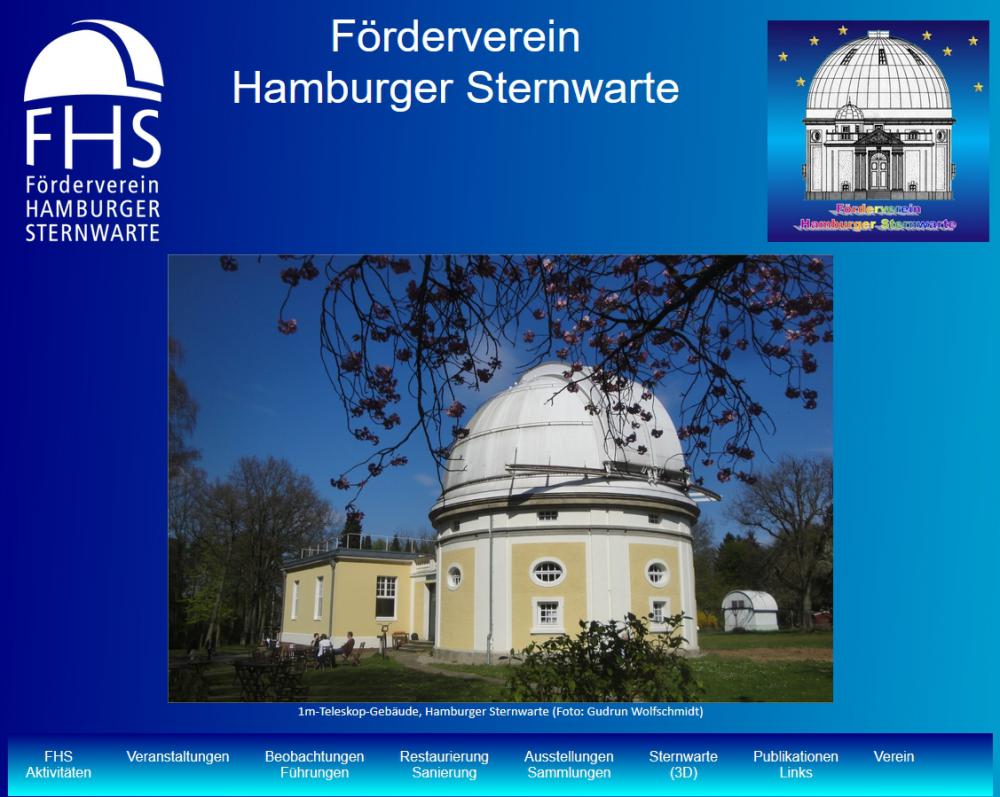

Fig. 13. Association Promoting Hamburg Observatory (FHS), German National Award for Monument Protection for the FHS (Deutsches Nationalkomitee für Denkmalschutz DNK, Silberne Halbkugel) in Weimar 2006 (© Gudrun Wolfschmidt)
- Activities of the "Förderverein Hamburger Sternwarte" (FHS)
- "Förderverein Hamburger Sternwarte - Association of Friends of Hamburg Observatory
- Events 2021
- Unesco activities
- Earlier Activities since 1998
- Virtual 3D tour in the Astronomy Park Hamburg Observatory,
organized by the "Förderverein Hamburger Sternwarte" (FHS)- Hamburg Observatory in 3D (© cp360pano.com)
- Hamburg Observatory in 3D (four buildings)
- Visitor Center of Hamburg Observatory
August-Bebel-Str. 196, 21029 Hamburg - Activities: Symposia, Meetings, Lectures in Hamburg Observatory
Collections of Hamburg Observatory
ICOMOS Symposium 2008 - Astronomy Workshop for Schools
- Schramm, Jochen: Sterne über Hamburg -- Die Geschichte der Astronomie in Hamburg
- Hamburger Sternwarte - 100 Years of the Observatory Bergedorf (2012) -- 2 books: Nuncius Hamburgensis; Vol. 24 and 29
Links to external on-line pictures
- https://www.fhsev.de/bild/1m-wf-1823.jpg
- https://www.fhsev.de/bild/1m-blau_wf-0983-300.jpg
- https://www.fhsev.de/bild/Gr-Refr_260417_wf-0888.jpg
- https://www.fhsev.de/bild/Gr-Refr-hs06.jpg
- https://www.fhsev.de/bild/1m-Astronomietag-250317_wf-0309.jpg
- https://www.fhsev.de/bild/1m-renov-6326.jpg
- https://www.fhsev.de/bild/Aequatorial+OLT_wf_0187.jpg
- https://www.fhsev.de/bild/Aequatorial_020817_Wf-4661.jpg
- https://www.fhsev.de/bild/Meridiankreis_wf-0965.jpg
- https://www.fhsev.de/bild/meridiankreis-instr.jpg
- https://www.fhsev.de/bild/LNM-2015-Lippert-HH-wolfschmidt.jpg
- https://www.fhsev.de/bild/Salvador-SoFi-2015-42.jpg
- https://www.fhsev.de/bild/Schmidtspiegel-org-Wf-3402.jpg
- https://www.fhsev.de/bild/Engels_HS-Schmidtspiegel-CA_e23_rot.jpg
- https://www.fhsev.de/bild/OLT-190417_wf-0692.jpg
- https://www.fhsev.de/bild/Radioteleskop-KRT3-HS_2177.jpg
- https://www.fhsev.de/bild/HS-Bibliothek_S-Hoffmann.jpg
- https://www.fhsev.de/bild/Plan-HS_A0q-2018.jpg
No multimedia content published
Currently there is no multimedia content published for this case study






-Wolfgang.JPG)


-Wolfgang.JPG)
